FLAT HAT MAGAZINE



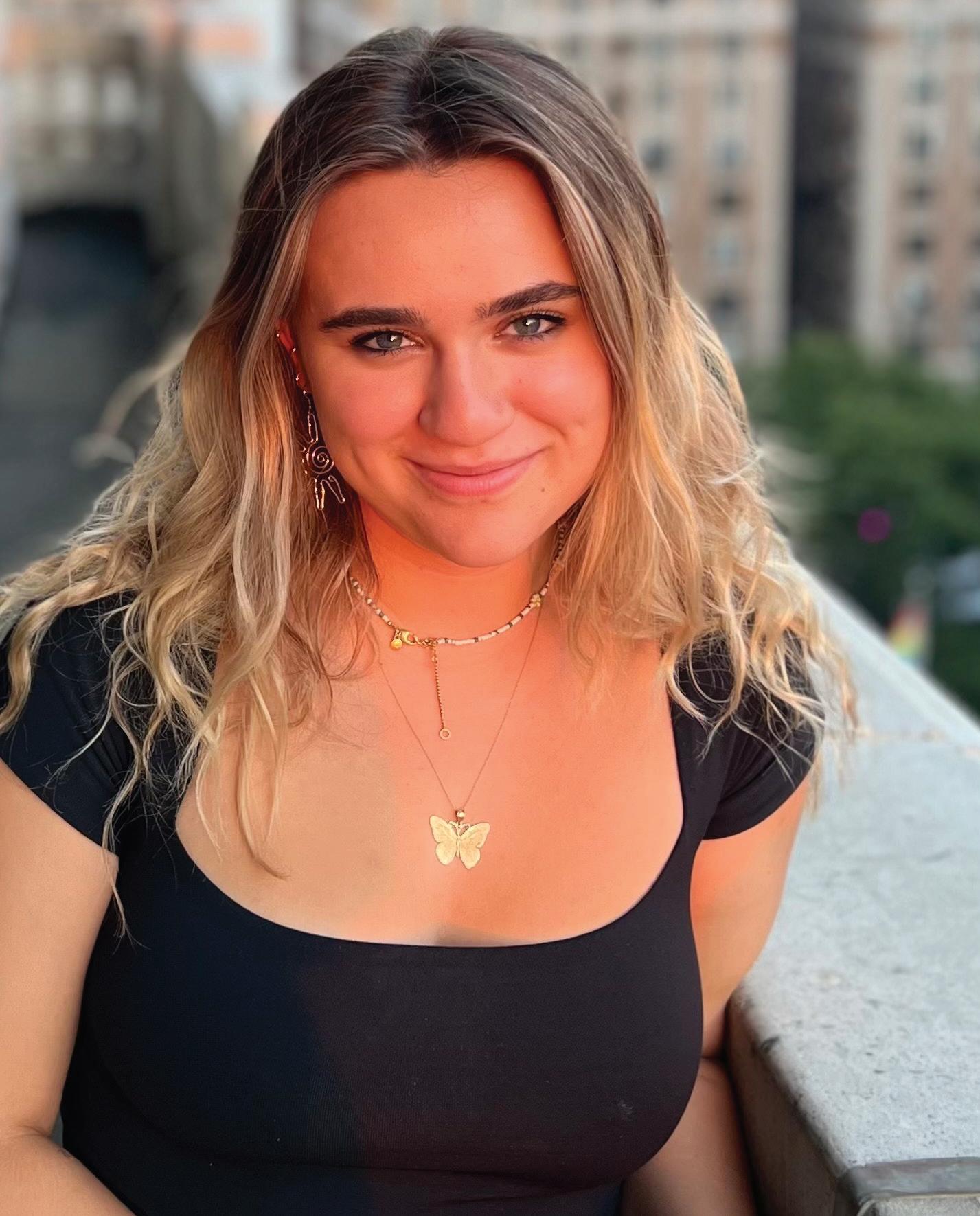

On an impossibly humid day in late August, we were catching up on each other’s summer breaks in Sadler Center’s newly expanded wing. Against the background noise of overzealous chanting OAs, we reflected on the various milestones we have crossed: making it halfway through our undergraduate careers, entering our second term as Editors-in-Chief, and inching toward a more well-rounded version of ourselves (in theory, at least).
From that point onward, naming our Fall 2022 Issue “Movement” was a no-brainer. Just look at the College of William & Mary’s numerous dichotomies: vibrant youth on a centuries-old piece of land, cars zipping past horse carriages in Colonial Williamsburg, and a booming emphasis on business and STEM research all while maintaining high liberal arts standards.
More recently, the College unveiled a 10-year housing & dining plan to overhaul the student experience that has already begun altering the campus landscape. The campus is quite literally moving in new directions.
With the planned closure of Campus Center, the Sadler expansion has taken on a renewed prominence in serving the community as a work, play, and study hub. For the Flat Hat, this has brought about change in the form of a new office space. As for the loss of Qdoba and the Daily Grind in service of the renovations — well, we’ve got opinions.
Yet, against the backdrop of these modernization efforts, the College’s historic charm can still be found in places like the CW House. And though we are firm proponents of preserving tradition, we also take a stand on the issues we believe in — ask the students who worked on tight Congressional campaigns this semester.
The world stood at a brief standstill during the COVID-19 pandemic. But since lockdowns eased, our lives have been moving faster than ever. Various social media fads have come and stayed — think TikTok influencers, BeReal, and, dare we say, YikYak — while political clashes from Florida’s “Don’t Say Gay” bill to Roe v. Wade has engulfed public discourse. As the magazine has settled into its groove, we are ready to editorially tackle more of our pressing issues and global challenges.
Moreover, as an Arts & Culture magazine, we should highlight the role of art, music, and literature in our lives. Be sure to check out our photoshoots, short-story contests (current and previous), an unofficial music critic’s commentary, and more.
None of this would have been possible without the support of our incredible editorial, creative, and digital teams. Whether you’ve been on staff for two years or two months, we sincerely appreciate your dedication and energy. We’re excited to see what next year’s EIC(s) bring to Flat Hat Magazine. It’s been a pleasure to work with you all!
Happy reading!

One thing about Zarielle Anthony ’23? She’s always looking fly from head to toe. Visual aesthetics and style define Anthony at her core. Yet what is not readily known about Anthony is how she has been able to monetize her passion for fashion. Read on to learn more about Anthony’s journey as a successful content creator of color and how she navigates her dual personas as both a College of William and Mary student and a popular online influencer.
From her online throne, Zarielle Anthony ‘23 runs a social media empire, occupying territory across multiple different platforms — most notably Instagram. She has amassed nearly 40,000 loyal followers on her account @zariellea.

@zariellea serves as a digital archive for all things fashion and lifestyle, two of Anthony’s greatest passions. What is perhaps most striking about Anthony’s Instagram is its careful attention to aesthetics, whether it’s her color-coordinated outfits or stills of nature. Even her product placements are thoughtfully curated.
Yes, that’s right, product placements — with so many followers on Instagram, it should come as no surprise that Anthony has popped up on the radar of many universally recognized companies and brands that most people could only dream of working with. Brand names like Neutrogena, Coca-Cola, Walmart, and Amazon are a constant presence on Anthony’s Instagram account.
However, this wasn’t always the case. Anthony is the first to acknowledge her humble origins, which she traces back to 2018-19 during the Pinterest and Tumblr craze. Inspired by photos going viral on these sites, Anthony decided to take some of her own and post them on Instagram, where she eventually amassed a large following. With such a vast number of followers, it was only a matter of time before monetization became an option for Anthony.
“I got a couple of emails from a bunch of different brands, and they were just like, ‘We’ll send you products if you describe to your followers the quality of them and take aesthetic pictures to match with the feed [you’re] already doing,’” Anthony said.
These initial emails opened the door to a lucrative career in content creation; however, now Anthony’s content is quite different. Taking advantage of these opportunities, Anthony gradually transformed her Instagram account from a hobby into a fully-fledged business.
“In the beginning, I was still getting the ropes of it, so it was definitely a lot of startup companies that I was working with,” Anthony said. “[I started] taking better quality pictures and fixing my emails and brand outreach, [which] helped me with getting those bigger partnerships. And I’m signed to some agencies, so that also helps for bringing in those bigger brands. But I feel like ... over time, my portfolio has developed more professionally, so that’s what’s catching the attention of bigger brands now.”
With the increase in name recognition of her sponsorships has also come a drastic increase in the number of free products she receives from brands eager to collaborate with her, a clear evolution from
the “chokers” and “phone cases” she laughingly confessed to having advertised in the early stages of her influencer career.
“If I could have all the packages that I have accumulated over my time of being a content creator, it would fill up — I don’t even know — multiple houses,” Anthony said with a sheepish chuckle. “I had so many boxes that my parents were over it. They’re so happy when I’m back at school doing this so that they don’t have to get all those packages anymore.”
However, for Anthony, it’s not always about the material perks. Anthony named Mars Wrigley — the owner of iconic candy brands like M&Ms and Snickers — as her most standout partnership to date due to the hands-on marketing experience it provided.
“The reason why [Mars Wrigley] was my favorite is because it wasn’t a product-based collaboration with them — it was more working behind the scenes,” Anthony said. “I got to be on their Ambassador Gen Z panel, and with that, I was actually working with the company on how they could develop better products, or how they could change their packaging to catch the attention of adults or even just Gen Z or kids ... It was doing more than just taking pictures with a product. I was actually working with the company in-depth with their brand design.”
Managing social media as a side hustle while being a full-time college student seems a Herculean feat. Anthony spoke candidly about how she manages her varying commitments while keeping the looming threat of burnout at bay. She stressed the importance of time management and organization: keeping meticulous schedules and getting her work done right away rather than procrastinating until the last minute.
“When school is in session, I try to do all my content on the weekends, just so that way I can focus on school during the week,” Anthony said, though she
later admitted that it is often difficult to stick to this strict division, as her content creation often demands her attention beyond the weekends.
Anthony added that it’s important to be realistic about what she can handle, which sometimes requires turning down exciting brand deals.
“I’ve learned how to not always say ‘yes’ to every single opportunity that comes to me,” Anthony said. “And just like sometimes telling brands, ‘Can we come back to this at a later time? Because I’m already overwhelmed working with this amount of brands already.’”
In addition to the extensive time commitment that content creation requires, maintaining a constant presence on social media can hamper one’s mental health, with issues of social comparison and self-critique continually resurfacing.
“I just feel like it’s very easy to get imposter syndrome on social media,” Anthony said. “It’s very easy to ... fall into downgrading yourself and thinking you’re not doing as well as others.”
It has taken Anthony much mental discipline to avoid constantly comparing herself to others and getting caught up in the numbers. To Anthony, the most important aspect of content creation is the content’s quality rather than the statistical attention it garners.
“I had to learn not to compare myself to others and not to pay attention to numbers,” Anthony said. “I emphasize to everyone that, at the end of the day, Instagram is just an app, and I just happened to be making money off of it. I feel like when I meet people, they go kind of crazy about the numbers, like ‘You have like 30K [on Instagram]?!’ But for me, because I’m used to it, I’m like, ‘It’s a number, it’s going to change however it wants to over time.’”
Anthony used to need extended social media breaks to alleviate the pressures of content creation. But now, she has strengthened her self-confidence enough to avoid relying on these hiatuses.

“I realized I’m my own person, and I take pride in my content being unique from how other people’s content looks,” Anthony said. “So I learned with my uniqueness, and the creativity and vision that I have, there’s no point in comparing to others because nobody’s doing content like me.”
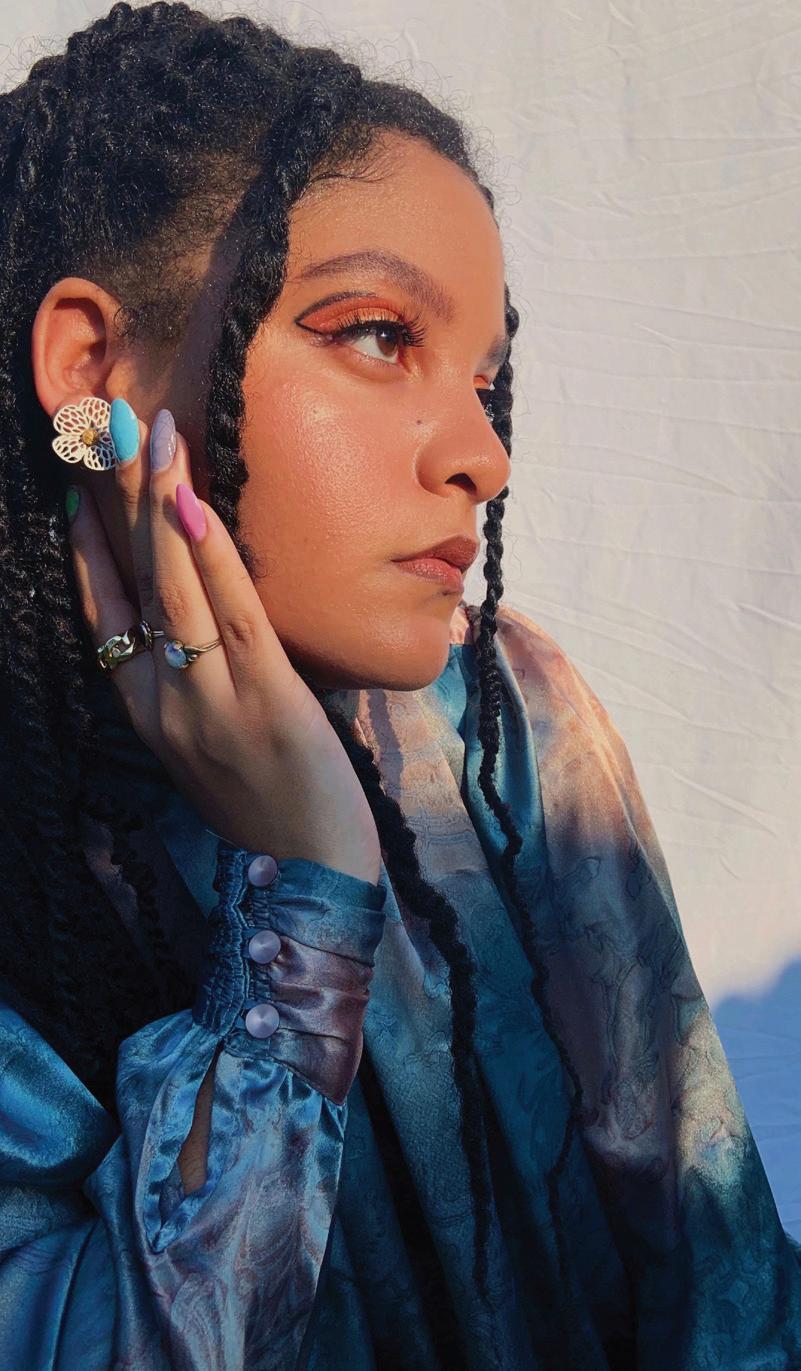
Anthony also credited her strong online friendships with other content creators all across the web for helping her feel more confident in her account, reminding her that what really matters isn’t the numbers but their shared passion for content creation.
“I feel like within the influencer content creator community, we really don’t look at numbers, we just look at the fact that we’re all doing content,” Anthony said. “And so if we have questions, if we need help — we just help each other.”
Although Anthony no longer occupies herself with her follower count or likes ratio, she expressed frustration at common misconceptions that she and other content creators are superficial and egotistical and that their online personas are “fake” in comparison to who they really are.
“People assume when people have numbers that they’re
going to be big-headed or [have a] Hollywood type of personality,” Anthony said. “So people do feel like my online presence and [me] in person are two different things.”
However, Anthony insisted that her Instagram account functions as an extension of herself and her eye for aesthetics, conveying that those who perceive her differently based on her social media presence don’t truly know her as a person.
“My closest, best friends — they didn’t have those assumptions,” Anthony said. “When they look at my Instagram, they’re like, ‘She’s someone with style. She seems humble. She’s helping us out. She’s giving us opportunities to get scholarships and money for college.’ And then they meet me in person. I’m still that same way. I’m still providing opportunities with school. I’m very humble, aesthetic. I’m always wearing nice outfits.”
Along with false assumptions about her character, Anthony has also struggled with the blatant disparities between white content creators and content creators of color. As a Black woman, her experiences with content creation feel starkly different from those of white influencers, especially when she has noticed time and time again that content creators of color do not get nearly as many opportunities as white content creators. However, she expressed admiration for the increasing advocacy and awareness surrounding these disparities.
“As a person of color, it’s been really nice to see how the community of people on Instagram have come together to point out the disparities that come from how much money content creators of color make [versus] white content creators,” Anthony said.
Anthony further highlighted the importance of content creators of color standing firm in the value they bring to partnerships and doing due diligence in researching the history of the companies they choose to work with.
“That’s one thing that was discussed in group chats I was in with other content creators of color: not accepting pay or campaigns that don’t align with our pricing for our content or our values,” Anthony said. “If there’s a brand that’s been in some racist stuff, we don’t work with them — just making sure to do our background research of a brand before we work with them.”
Anthony urged fellow content creators of color to hold companies accountable for their prejudiced behaviors, as doing so can set an important precedent for equal pay.
“I’ve learned if I’m going to put in the work and time, I’m not just going to set any payment, I’m going to accept the pay I feel is correct for the amount of deliverables,” Anthony said. “Don’t accept anything just for the money. Start showing these brands that if you want us on your campaigns, then we need the correct pay because you give correct pay to the white creators, so give correct pay and opportunities to us as well.”
However, such activism isn’t only confined to issues concerning wage inequality — it also extends to other areas such as representation, another hot-button issue in media.
“I feel like I’ve been seeing a bit more representation now because a lot of us content creators of color, we’re just putting our foot down, like we’re not just going to accept anything anymore — we’re not going to be the influencers used by a brand just to have a couple people of color on the campaign but majority, everyone else is white,” Anthony said.
Anthony ultimately posed several hard-hitting questions for other content creators of color to reflect upon, calling upon content creators of color to critically analyze how far they are willing to go to uphold their core values.
“It just goes back to the brand that you make for yourself,” Anthony said. “Are you one of those creators that just accepts any and every campaign? Or are you going to call out a brand when they’re doing something wrong? Are you going to put your foot down and say ‘no’ to certain brands that don’t align with your views, or are they just trying to reach a quota of having some people of color in their campaign?”
To Anthony, the more voices that cry out in opposition to brands undertaking performative diversity measures, the less influence these brands will have, paving the way for more deserving companies that are genuinely committed to showing all types of skin tones and people of different racial and ethnic backgrounds to rise to the forefront.
With so many intense complexities underpinning the politics of social media, Anthony must have avenues of reprieve from social media. Outside of being an influencer, Anthony serves as the Editor-in-Chief of the College’s ROCKET Magazine and is a member of Minorities in Medicine. She also crossed into Alpha Kappa Alpha Sorority last fall, and she has a twin sister who attends the College.
Although Anthony’s dream is to turn content creation into her full-time job, she recognizes the risk in pinning her entire future on something as fickle as social media. She continues to study kinesiology at the College and is working towards a STEM career.
“If [content creation] can take off to be more like a full-time type of thing, oh, I’m going to do it. That’s definitely the dream,” Anthony said. “But I’m going to also have my background in science to fall back on because the reality is that social media can go away at any point.”
Not one to gatekeep information, Anthony concluded with a final piece of advice for others seeking to break into the social media industry.
“Just be yourself, really,” Anthony said. “I feel like every day I’m just kind of seeing social media and the influencer market becoming oversaturated with everyone doing the same thing ... The uniqueness that influencer marketing once had is really diminishing now. So don’t contribute to this diminishing, to how saturated the influencer market is. Just come with your uniqueness and do what feels right for you.”
 Story by Ellie Kurlander ‘24
Story by Ellie Kurlander ‘24
In 2017, TIME Magazine featured William and Mary alumnus and Wikipedia editor Steven Pruitt ’06 on the list of the Top 25 Most Influential People on the internet. Others on the list included pop culture personality Chrissy Teigen, former President of the United States Donald Trump, and media personality Kim Kardashian. The magazine recognized Pruitt as one of the internet’s most “prolific guardians of fact.” With over five million Wikipedia edits to his name — more than any other English language editor — Pruitt strives to uplift stories nearly lost in history and maintain the integrity of one of the world’s most notable encyclopedias.
Flat Hat Magazine had the privilege of chatting with Pruitt about his rise in the Wikipedia ranks, his editing process, music, art, his time as a student at the College, and the power of taking the unexpected in stride.
As our conversation began, so did Pruitt’s editing for the evening.
“I use a semi-automated tool — it’s sort of background editing,” Pruitt said. “I can actually pay attention to our conversation once I’ve got it teed up. I’ve got a list of just over 3,000 edits to make.”
Pruitt explained that part of his high edit count is due to the many background tasks he takes on. These tasks include categorization work and his most recent project, short descriptions. “Short descriptions” are a feature of Wikipedia mobile that offers a brief description of the subject matter featured on the page. To demonstrate this process, Pruitt began working on the list of Canadian number-one albums of 1990.
“Short descriptions are important if you use mobile Wikipedia, which a lot of the world does,” Pruitt said. “I’m working with a tool that’s called AutoWikiBrowser to add short descriptions to list articles. It’s just really more back-end stuff, but it’s stuff that needs to be done. And really, that’s a lot of what I do, which is a lot less glamorous than I think people realize, but as I say, it needs to be done.”
Pruitt officially began his journey as a Wikipedia contributor in the summer of 2004 between his sophomore and junior years of college. During this time, Pruitt published his first Wikipedia article about his distant relative, Peter Francisco. Francisco — also referred to as the “Giant of the Revolution” and “Virginia Hercules” — was a Revolutionary War hero.
“Peter was a test case for me,” Pruitt said. “You’re talking about Wikipedia being something that can connect languages and cultures. I’ve known about Peter for years, so I said almost as a challenge, ‘Oh, yeah? Let’s see if you keep this article up.’ And I really didn’t think it was going to stay. But it didn’t go anywhere.”
Francisco’s permanent residence on the site revealed to Pruitt the vast potential of Wikipedia.
“We’re not limited by field,” Pruitt said. “We can really create a broad general interest encyclopedia, and we could then take that model into other languages as well.”
In addition to English, Peter Francisco’s page has been translated into Arabic, Armenian, Chinese, Indonesian, Portuguese, and Russian.
For Pruitt, another draw to the site was its accessibility. Even with the involvement of “computer geeks” in the project, Pruitt appreciates Wikipedia’s steadfast commitment to maintaining an understandable editing format.
Major Art History (BA)
Known
Honors
Steven Pruitt Pruitt in 2006 Education College of William & Mary for Most edits on English Wikipedia“That’s what I liked about it,” Pruitt said. “It isn’t just a free website that anyone can edit. It’s a free website that is designed to make it easy for anybody to edit it.”
The accessibility of Wikipedia allows Pruitt to indulge his scholarly pursuits without having to be in an academic setting.

“This allows me to write what I want at a length that I want without having to justify it for anything other than really my own pleasure,” Pruitt said.
In addition to his notable status as a prolific editor, Pruitt has recently become a vocal advocate for fighting the gender bias among articles on the site — according to Pruitt, under 15% of biographical articles in English were about women in 2014.
Pruitt became involved with the Women in Red Project, founded by Roger Bamkin and Rosie Stephenson-Goodknight in 2014. The project aims to create more articles related to women’s issues, written and artistic works by women, and biographies of women notable in their field. The “red” in the project’s title refers to a hyperlink placed on a name or event featured in an article that does not have an article of its own. Often, editors will place a red hyperlink to indicate that an article should be created for the topic.
Pruitt noted the project’s impact in closing the gender gap over only a few years.
“We’re changing the conversation,” Pruitt said. “A lot of the talk about Women in Red focuses on how big the gender gap is. And that’s true. But how much bigger was it five years ago? On Wikipedia, we’ve moved the needle [by] about 5% in four or five years. We’re at 19.16% now for all biographical articles in English.”
At one point in the project, Pruitt found himself writing at least an article a day, ending up with more than 600 articles over the course of a year.
Pruitt’s interest in female artists and composers spurred his commitment to providing a platform for women on the site.
“Women artists and composers have often been more marginalized, less spoken of, less discussed,” Pruitt said.
“And so it has always been something that gelled with me.”
Recently, Pruitt wrote two articles about a 19th-century French opera singer with two wildly successful singing careers under two different names: Juliette Borghèse and Ufrese Borghèse. Pruitt was initially fascinated by Juliette Borghèse and her role in the notable Donizetti opera, “The Daughter of the Regiment.” It baffled Pruitt how little information there was on her life, so he leapt down the historical rabbit hole. He discovered that Juliette Borghèse had changed her name to Ufrese early in her career, ultimately splitting her narrative into two different biographies. As a result, Pruitt created two Wikipedia pages for the two Borghèses.
“If anybody comes to me and says, ‘Why did you write something like this?’ I can say, ‘Because this was a woman who was evidently important in her field in her day,’” Pruitt said. “And Women in Red is particularly good at that. Much of the question over the years has been framed as, ‘Who gets a seat at the table?’ We are broadening and deepening consensus just through these conversations, through these articles that we’re writing. And that’s a huge deal to me.”
Pruitt has some standards a potential article subject must meet. Typically, he avoids writing about living people, instead preferring to write about notable figures from history whose stories he feels haven’t been told in their entirety.
“Notable does not mean complete,” Pruitt said. “Just because a person is notable doesn’t mean the article is going to be complete. So there’s always going to be
“Notable does not mean complete,” Pruitt said. “Just because a person is notable doesn’t mean the article is going to be complete. So there’s always going to be the possibility of something new to be added, something new to be said. The whole beauty of Wikipedia is that it’s changeable, it’s mutable.”
the possibility of something new to be added, something new to be said. The whole beauty of Wikipedia is that it’s changeable, it’s mutable.”
In terms of the longevity of Pruitt’s Wikipedia career, he has no plans of stopping any time soon and continues to uphold his policy of at least one edit a day.
“There may come a point when I feel like I’ve at least done every sort of mass edit that I think needs to be done,” Pruitt said. “But for now, I envision it to be long-term.”
His passion for uplifting stories nearly lost to time and dedication to maintaining the integrity of Wikipedia justifies TIME Magazine’s “guardian of truth” moniker. In a world rampant with misinformation, Pruitt’s pursuit and publication of knowledge should leave those reading this article refreshed and optimistic.

“I was in the middle of a meeting at work when I got the email,” Pruitt said. “I think my initial reaction was, ‘Excuse me, what?’ That was very interesting. Especially because all around me, what I was hearing was, ‘Oh, my God, you’re on the list with Kim Kardashian.’”
For Pruitt, the news that TIME had recognized him as one of the most influential figures on the
internet was simply another day at the office — literally.
“I was in the middle of a meeting at work when I got the email,” Pruitt said. “I think my initial reaction was, ‘Excuse me, what?’ That was very interesting. Especially because all around me, what I was hearing was, ‘Oh, my God, you’re on the list with Kim Kardashian.’”
For Pruitt, the bigger honor was being placed alongside jailed-Russian opposition leader Alexei Anatolievich Navalny.
“To be spoken of in the same breath as him — that, I will admit, I’m proud of,” Pruitt said. “He’s the kind of person who actually does things that matter and uses the internet to do things that matter. And I have great respect for anybody who has the courage that he has.”
While Pruitt has made a name for himself in his post-grad life, the College — an institution Pruitt still maintains a fond place in his heart for — chartered his journey.
One of the most impactful aspects of his undergraduate career was choir. There, Pruitt established lasting friendships and honed his craft as a tenor under the expert instruction of former choir director Dr. James Armstrong.
“For a music program that doesn’t have a lot of music majors in it and is not geared towards a broader music degree, it’s a very substantial [with] a good choir, good orchestra, excellent chamber groups, ethnic groups, ethnic ensembles. . . “ Pruitt said. “It’s the kind of
offerings you expect to see at a school with double the music programs. So many of the students were doing it for passion. It is remarkable, and I cannot stress that enough because I think it’s very easy not to recognize what you’ve got when you’ve got something like that.”
Pruitt is the textbook definition of a “Typical William and Mary Person” in all the best ways. He exemplifies someone who follows their passions with enthusiasm, earnestness, and curiosity. When writing articles, Pruitt’s pursuit of truth and uplifting marginalized voices and their stories inspire those around him to follow suit.

Pruitt’s advice for students striving to make their mark on the world is enduring: Rome wasn’t built in a day.
“People make all the jokes about how W&M students are driven, focused, want to succeed, and want to achieve. . . that we’re type-A,” Pruitt said.
But that drive comes with a downside — sometimes students at the College, especially as young graduates, can push themselves too hard, expecting worldchanging success too soon.
“If you’re not where you want to be by the time you’re 30, don’t beat yourself up over it,” Pruitt said. “I’m not saying rest on your laurels or be lazy, but be easy on yourself. That is what I wish somebody had told me upon getting ready to graduate — that whatever there is will come, but it will come in time in its own time. You don’t have to worry if it doesn’t happen when you expect it to happen.”
Pruitt recalled how his father would talk about opening doors; however, it was up to him to decide which ones he chose to walk through.
“The thing is, the door that I ultimately walked through that got me all the attention is a door that I would never have believed would have opened for me, even. Much less that I would have gone as far with it that I have,” Pruitt said. “Be open to new ideas, new choices, and new experiences. You might be surprised when one of them will take you to something that today you think is just a whim, and tomorrow might be the cornerstone of your career.”

Nearly all students at the College of William and Mary frequently venture to Richmond Road, and most often, their destination is either the campusfamous Wawa or Chick-fil-A. However, sandwiched between the two prominent eateries lies a resource that many in the College community know little about, despite the immense benefits it offers to its members: the Alan B. Miller Entrepreneurship Center.
The Entrepreneurship Center teaches interested students the skills and mindset of an entrepreneur. In this way, the Center provides students with the tools they need to succeed should they ever attempt to found a start-up.
Broadly, the Center offers students skills that they can put to work in any life path they choose. “Innovation ... is such a good supplement to literally any major — it’s not just business,” Sara Curtiss ’24, a student employee of the Center, said. “It’s just about thinking outside the box and being creative and running with an idea.”
Many aspects that the Center emphasizes are universal in nature, allowing any student to benefit from the experience.
“Some of the tenets — opportunity, discovery, grit, failing wisely — all of those I could see applying no matter what career I go into,” Neha Kosaraju ’23, another student employee of the Center, said.
Because of how crucial these skills are to one’s professional and personal life, the Center tries to dispel any myths about it being exclusively for business students or those interested in startups. Instead, the Center is a place for anyone looking to make the world a better place, student employee Amanda Willigerod ’23 explained.
“We really wanted to drive the distinction that we’re not just a place where people come to learn about entrepreneurship, and obviously that’s still one of our main components, but we really wanted to emphasize that our intention is of teaching these skills, so that these students are able to go out into the real world and tackle these modern problems,” Willigerod said.
At the Center, Executive Director Graham Henshaw, along with the student staff, seeks to inspire and help bolster the ideas of any students who step into the Center.
“It’s just a place for you to come in and foster innovative thinking, and we do say, ‘Make your idea more than an idea,’” Curtiss said.
“The Entrepreneurship Center doesn’t only exist to launch startups,” Henshaw added. “That’s a great
manifestation, and we love that, but if someone goes on and gets a great job, we also are highfiving there, because that’s a great outcome as well. And more and more, employers need people with these kinds of skills and ability to think entrepreneurially.”
The Center hosts two regular public-facing events: alumni speakers and “Rocket Pitch,” a Shark Tankstyle presentation of student startup ideas to hone students’ skills and encourages the application of creative thinking to solve some of the world’s biggest problems.
The Center also brings in a wide variety of guest speakers to share their stories and motivate the community to pursue innovative thinking.
“It’s one of my personal favorite events, because you get to come in and hear someone’s story and how successful they’ve become — and they were literally in your shoes, especially [in the case of] alumni. They’re mentioning things about their experience on the William & Mary campus,” Curtiss explained. “They might have even been a history major, or something you wouldn’t expect, and then to see they’ve started multiple ventures since then and they’re extremely successful is just really cool to see and gives students inspiration to have the courage to run with an idea.”
The motivation that the guest speaker events can evoke among attendees should not be understated, as many students who are involved with the Center have a plethora of good — and
“We really wanted to drive the distinction that we’re not just a place where people come to learn about entrepreneurship, and obviously that’s still one of our main components, but we really wanted to emphasize that our intention is of teaching these skills, so that these students are able to go out into the real world and tackle these modern problems."
potentially profitable — ideas but are stopped by a lack of confidence. Hearing firsthand about these successes is often the impetus students need.

“Seeing people who are successful and making changes all around the world, I think just provides students with whatever resources they need to make their vision come to life,” Kosaraju said. “We want people to be as ambitious as they want to be.”
“It’s so much fun, and it’s really thrilling just to be on the spot and have to deal with this Q&A style format, and to only have two minutes to project and make people understand your idea,” said Jack Rizzo ’25, the Center’s Spring 2022 Rocket Pitch champion.
Rocket Pitch is also an interactive experience for the audience.
“It’s fun to also watch people in that position, and also to hear their ideas and just be like ‘I never thought about that, that’s really fascinating,’ and then talking to them afterwards because everyone is really approachable,” Rizzo added.
This semester, the Center has incorporated its new overarching goal — using the skills of entrepreneurship to solve global and large-scale issues — into weekly events with the help of the United Nations Sustainable Development Goals (UN SDGs) as a baseline.
“We’re encouraging students to put on Rocket Pitches that are under the lens of whatever UN SDG we’re focusing on,” said Willigerod. “We’re hoping that [our students] are inspired.”
These aspirations, though, are not a requirement to participate in the Center’s programs, but rather, it’s a recommended outlet for one’s creativity.
“Each semester, we are trying to have a focus, so we do encourage students to use it as an opportunity to direct their goals, but we are always open to any ideas in any industry. It doesn’t have to be related to that goal, because we don’t want to close any doors here. We want to make sure that students are doing what they are interested in and passionate about,” Kosaraju added.
Although this is a relatively new venture for the Center, it is one to which the student team is wholeheartedly dedicated, as each member wants to see the Center involved in the dialogue to solve large-scale issues and have a positive impact on the planet.
“We’re trying to shift our focus to be a little more specialized and a little more worldwide,” Curtiss said. “We’re trying to adopt even more next semester, focusing on sustainable development goals.”
Even though members may not have experience
with these specific issues, passion and entrepreneurial skills are often more than enough of a starting point.
“We certainly don’t bring climate adaptation expertise, but we bring the entrepreneurial lens through which to look at those things,” Henshaw said.
Henshaw is very passionate about using the Center and its resources to help solve global issues like climate change.
“These are really big problems that are facing our planet, and we’d all be very fortunate if they were going away any time soon, but they’re not, so I think this also gives us some staying power to say, this versatile tool kit, we’re going to aim it, and aim it at problems that really matter,” Henshaw said.
“It’s been really interesting to see some of the ideas that have come out of it already, just things I don’t think we would have had if we hadn’t driven the focus and our programming in that direction,” Willigerod added.
The Center will not be fixating on a single goal perennially, but rather, plans to rotate through the various UN SDGs in order to keep the program fresh and new.
“That’s the great thing about the EC here — we are always innovating and changing and adapting to whatever the students need,” Kosaraju said. Regardless of a semester’s particular goal, the Center will always be an integral resource intent on helping all those in the College community who wish to utilize its services.
“We like to describe it as a resource for students, so it’s not necessarily a club or a program you have to be a part of, but it’s really whatever the students need. I like to think of us as support to make their ideas happen,” Kosaraju said. “It’s like a community: whether it’s coaches, networks, alumni, or current students, it’s a community that’s going to support you and help you with whatever you need.”
“They have some really cool events that go on there, so the more you step in, it’s like a feedback loop, you just see more and more things the EC has to offer,” Rizzo said of the Center’s vast array of exceptional programming.
Even if Center members do not participate in all of its programs, just occasionally attending the various events offered can be more than enough inspiration to better one’s own life.
“At our young age, it’s kind of hard to think you have an impact that large, but you have to start somewhere,” said Curtiss. “There’s so much more to it that I didn’t realize, and it opened my eyes to what could be possible through innovation.”
“It is our belief and our observation that if you can think and act entrepreneurially, you can make more meaningful, and sometimes, more rapid progress on things you care a lot about,” Henshaw said.
Despite all of its benefits, the Center is still unknown to a significant portion of the College community, a fact that Center members and employees are trying to change.
“I would love for William & Mary to be known for its entrepreneurial thinkers, [for it to be] a school that people seek out and look to attend because they want to leverage those skills,” Willigerod said.
In Curtiss’ eyes, “Taking that next jump, to pick something that you’re passionate and interested in and then making change ... will make the world a better place.”

Students at the College of William and Mary are making their voices heard this midterm season, not only in the voting booth but also on the campaign trail, working for local and national candidates while balancing life as full-time students.
Story by Mary Trimble ‘23Editor’s Note: This article was written prior to the 2022 midterm election.
It can often feel like nothing good can be said about the state of American politics — whether on the left or right, a devoted moderate or staunch ideologue, the feeling that things are sitting on a razor’s edge pervades. For some, this unease provokes action; for others, it demands disengagement.
In a demographic famous for its apathy, however, many have chosen participation. The 2018 midterm elections saw record youth turnout. Analysis from Tufts University’s Center for Information and Research on Civic Learning and Engagement found that nearly 30% of young people aged 18-29 voted, a figure double that of 2014. Midterms in general have lower turnout than presidential elections, and that depressed turnout is particularly noticeable among demographics less likely to vote in general, specifically young people.
Salaar Khan ‘23, who works on Herb Jones’ campaign for Congress in Virginia’s 1st District, which includes James City County, disagrees with the prevailing wisdom about young voters.
“One of the biggest myths about Generation Z, especially from older people, is that we’re apathetic,” Khan said. “When you look at specific issues, like the summer of 2020 after George Floyd was murdered, young people came out in a big way and showed how much they cared. But the challenge a lot of times is connecting those issues to candidates.”
As exemplified by Khan, a dedicated group of students at the College, from both sides of the aisle, has chosen engagement over apathy, working on midterm campaigns in one of the most competitive areas of the country while balancing school work and a full social life at the College.
Gen Z came of age in the Donald Trump era. For many, the Trump years represented a political awakening that took place before they were even able to vote themselves. In 2018, the oldest members of Gen Z were 21 and may have voted for the very first time in the 2016 election.
Natalie Boston ‘23, an intern with Williamsburg’s local Democratic Party organization called the Historic Triangle Democrats, says that the 2016 election was “contentious” at her Connecticut high school.
“I saw students arguing with each other, and it became very interpersonal,” Boston said. “I felt like this was affecting us so much and that I’d love to get involved. I can’t just sit while these really impactful elections happen.”
She did get involved, campaigning for Hillary Clinton, the Democratic Party nominee running against Donald Trump, before she could even vote for Clinton herself.
James George ‘24, an intern on Jennifer Kiggans’ campaign in Virginia’s 2nd District, which closely neighbors Williamsburg, said his friends teased him for his interest in politics during the 2016 election cycle.
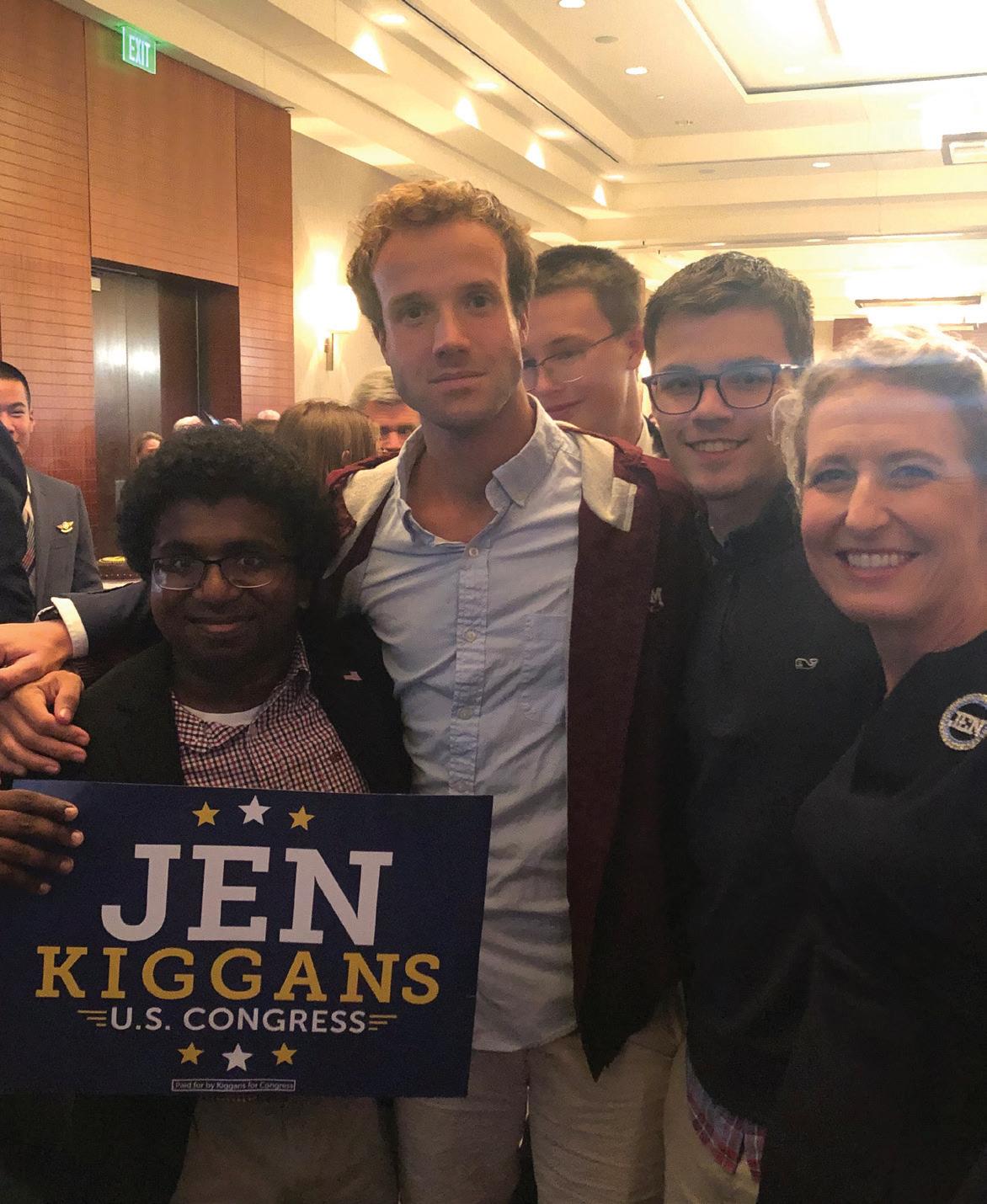
“They were like, ‘James, stop it. You’re obsessed with politics — get a life,’” George recalled.
In 2020, an election that saw the highest overall turnout of any in history, Tufts estimated that 50% of young people voted, up 11 points from the 2016 presidential election, with Gen Z, logically, representing a more significant share than in years before.
Khan has spent nearly a decade thinking about the youth vote, first getting involved in his local Democratic party organization in Henrico County, Va. at 13 years old.
As a person with disabilities, Khan says the supportive community around him helped him to succeed despite the challenges he faced, but he saw that wasn’t always the case for others with similar circumstances.
“I think around the time that I was in middle school and getting more politically engaged, I felt like there was a community that supported me, but there was a.) a broken system and b.) a government that wasn’t doing the same thing for others that my community was doing for me,” Khan said. “Not all the people I saw like me had the same opportunities I did.”
When Khan first joined the Henrico County Democrats, he became the organization’s youngest member, with the next youngest being 29 years old. After the 2016 election, when interest in local politics skyrocketed and the party was flooded with new (and younger) members, he ironically became one of the most senior members by rank, despite being only 15 or 16.
Khan made it his goal to connect the party to young people. Before the 2020 election, Khan and a friend formed a student caucus in the Henrico County Democrats to help get students consistently engaged in politics. He also co-hosts a podcast, “Our Seat at the Table,” about engaging young voters in politics.
“When we talk about turnout, there’s a tendency to blame the voters — to say whatever demographic, whether it’s a racial group or an age group — didn’t show up; it’s their fault,” Khan said. “To me, it’s the opposite. It’s your job as [a] candidate — as a campaign, as a movement — to engage these people, to give them a reason to show up.”
Knocking on doors, drafting mass texts, and making calls in phone banks, students are trying to connect their candidates to the issues voters care about. And Republican, Democrat, or independent, those issues
are the economy and abortion, according to the students interviewed.
With inflation at a high not seen since the 1970s and the recent U.S. Supreme Court decision that overturned Roe v. Wade and thus removed federal protections for a woman’s right to an abortion, both Republicans and Democrats are focusing on issues that can mobilize their bases, and the stakes feel high for those spending hours of their time working on these campaigns.
“A lot is on the line,” Khan said. “The 2022 elections are going to set the stage, obviously, for 2024, which people are already thinking about, but also people’s lives for the next 2 years and the decades to come.”
Bryce Earley ‘22, who works for Congresswoman Elaine Luria’s re-election campaign, also sees opportunity and gravity in these elections.
“I believe that abortion rights are at stake. I believe that our economic future is at stake,” Earley said. The economy, Earley said, is important for young people, especially as they look for entry-level jobs and try to pay off student loans.
Sometimes, these students find it nerve-wracking to face voters, whether it’s asking for money on a fundraising phone call or walking up to their doors to ask for their vote.

“When I go up to a door, I sometimes wonder, ‘Is this going to be the guy who tells me to get off his lawn?’”
Quinton Kohler ‘24, an intern for Kiggans, said.
“For me personally, it’s very worth it,” George, who often knocks on doors with Kohler, said. “We’re advocating for a cause we believe in. If we don’t put in the effort for this cause, we won’t get the return we want.”
Especially as Election Day nears, balancing school and work has become more of a challenge, especially for those working on the Luria and Kiggans campaigns in the 2nd District, which is anchored in Virginia Beach — an hour-long drive from Williamsburg on a good day and much longer on a bad day. The race is one of the most hotly-contested in the country.
“Balancing it with classes is kind of hard,” Kohler said. “We’re secretly celebrating the end of the election because it means our time suddenly frees up, and I don’t have to spend 20 hours a week doorknocking.”
This feeling is shared by Earley, who drives to Virginia Beach every Monday to work in person.
“At this point in my life, if I had one of those word bubbles, and the biggest words are the ones you say the most, the biggest words would be ‘Elaine Luria,’” Earley said. “Right now I’m feeling exhausted, but I’m feeling exhausted in a way that matters.”
But Earley has no intention of giving up the fight.
“I can see the light at the end of this tunnel, and that’s what keeps me going,” she added. “How important this is and how close we are.”
As students, they all understand academic metaphors. Describing the stress associated with the last week of a congressional campaign, Kohler compared it to a class assignment.

“You’re finishing a school project — you have 10 pages left on the last day, and you need to get it done. But you need an A on this project or you fail,” Kohler explained. “It’s like pass/fail. You either get a 4.0 or a zero.”
Photos Courtesy of IntervieweesGeorgia Thoms ’23 sat down for a cup of tea with the two current residents of William Randolph Lodging, more commonly known as the CW House, to discuss the movement from campus living to a living museum as well as how this connection with Colonial Williamsburg furthers their academic interests.
Set on the edge of the main road across from the cabinetmakers, the CW House resembles a home for a wealthy colonial family. The house was reconstructed in 1920 when W.A.R Goodwin persuaded philanthropist John D.Rockefeller Jr. to finance the revitalization of Williamsburg to its 18th-century origins.
Its current inhabitants, Heidi Zmick ’23 and Sarah Richman ’23, are part of a long line of previous residents from the College of William and Mary. Zmick explained the house’s history — and some popular misconceptions surrounding it.

“It was owned by William Randolph, grandfather of Peyton Randolph, who owned the house just down the street, which is also painted red like this one, which is why our house normally gets mistaken for being haunted, since [the Randolph House] is one of the most haunted houses in America,” Zmick said.
Zmick and Richman met through a mutual friend and, with many similar interests, became roommates in fall 2021. Both are conducting honors theses for the history and English departments, respectively, and serve as coPresidents of the Heritage Dancers club on campus, which specializes in English-influenced 17th and 18th-century dance
Zmick became interested in applying to live in the CW House through her history professors and her certification work with the National Institute for American History and Democracy (NAIAD), a program in public history and material culture through the College’s partnership with Colonial Williamsburg.
“Essentially, the program is a connection between Colonial Williamsburg and the College, and classes are in material culture, public history, and museum studies, which means a lot of them are traveling either in CW or to other museums in the area and looking at how the museums run and how they interpret information to the public,” Zmick noted.
“But also how they can ... connect with people and share that information effectively and accurately.”
Richman laughed, saying she was simply along for the ride, but that living at the CW House has been quite an adventure. As residents, they are responsible for maintaining the historic experience.
“In terms of starting with the exterior of the house, we can temporarily leave 19th-century things outside in view,” Richman said. “However, for the most part, you have to hide it. You have to send them photographs, and they can approve if it looks from the 18th century.”
They are also required to interact with the public via social media, participate in certain events like the trick-or-treating Halloween parade, and decorate for the holidays.
“This semester we’ve done a few so far. We had the dance event where we went and danced to live music,” Zmick recalled. “We had a scavenger hunt, which was mostly social media based. It was like a bingo and scavenger hunt, and there were different places in the museum, and then they came here to collect a little prize.”
The roommates treasure living in CW. However, there are a few quirks, including some nosy neighbors.
“This neighborhood has probably a higher rate than usual of people trying to break into your house, but a lower rate than usual of people who mean harm,” Richman joked.
Moving from their previous dorm — Old Dominion — to the CW House was a unique but positive experience.
“The sort of worldview, [the] change of distance is really interesting, because in Old Dominion, we were both going to our academic buildings, which are quite literally just across the street, and then we would go to Sadler, and that was like our whole little area that we lived in,” Zmick explained. “We were rather homebodies, but now we’re like, ‘Oh, we’ll just bike a mile.’”
The change from living on a modern campus to interacting with the 18th century on a daily basis was transformative.
“With move-in itself, it was somewhat of a sort of surreal experience because it’s not something you do every day. Just getting to drive into CW through the museum and live in a house in the
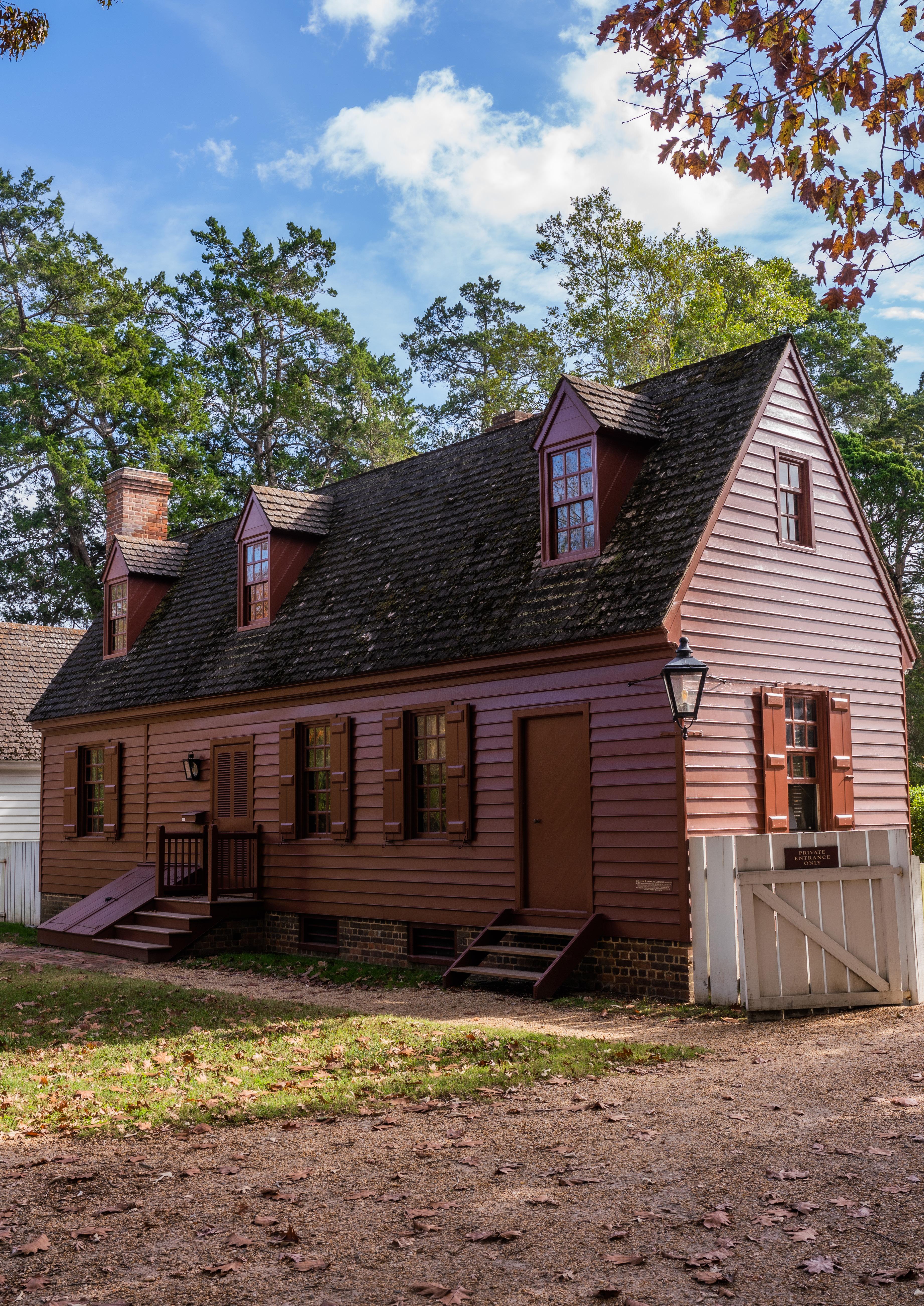
Instagram: @thecwhouse
Facebook: William Randolph
Lodging - Colonial Williamsburg
TikTok: @the_cw_house
largest living history museum in the world — it’s pretty incredible.”
Their initial journey contained some roadblocks. With a sudden switch in administration, information, rules, regulations, and WiFi were lost. Their first TikTok, captioned, “That moment when your college gives you the keys to a house in Colonial Williamsburg with no further instructions,” went viral, amassing 1.3 million views.
It did work out in the end, and the pair look forward to adding to the house’s legacy.
“Moving into this house is interesting because it sort of collects the memories of everyone who’s lived in it before,” Richman said.
Zmick described living in the house as being part of a “picture-perfect world,” further benefited by the surrounding community.
“It’s nice finding a different community here in CW too; we’ve made friends with the musicians,” Richman added. “They were there playing on the courthouse steps on Thursday, Friday, and Saturday nights. So we go down and do an English country dance.”
Apart from the physical move off campus, both felt an evolution within themselves.
“The theoretical movement from campus to this house is a movement more towards adulthood,” Zmick said. “I do think it is a movement in that direction for living more on one’s own with less of the support of the College.”
The application for living in the CW House goes live beginning next year — and the current residents highly recommend the experience, noting that the partnership between the College and Colonial Williamsburg is one of a kind.
Rising seniors are granted preference, and the goal of living in the Historic Area is to maintain and improve the connections between colonial and modern Williamsburg beginning at the heart — the

students.
“In the essays and in the interview, even if you feel like ideas are kind of out there or a little bit far-fetched, definitely share them, because what they’re really looking for is people who have creative event ideas and creative new ideas for how to do things and bring people into the house and into Colonial Williamsburg,” Zmick asserted.
Oftentimes, there is an overlap between particular clubs, such as Heritage Dancers or the College Company, due to their interest in living history, museums, and the 18th century at large, but the application is open to all students.
“I think generally, regardless of whether the residents ... knew the upcoming residents previously, they definitely get to know them a little bit, to sort of show them the ropes, give them some pointers before they move in, which was definitely very helpful to us,” Zmick said.
While there is more responsibility to living in the CW House compared to campus dorms, nothing beats being able to bike home as the cressets are lit each evening and the Fife and Drum Corps’ performance echoes in your ears.
“It’s just a really wonderful atmosphere ... The museum has created this little bastion of an 18th-century world, which is a little bit perhaps picture-perfect and not necessarily realistic,” Zmick said with a smile. “But we get to live in that little picture-perfect world and experience it every day, which I think is quite beautiful.”
If, however, you prefer to visit Colonial Williamsburg rather than live there, all students of the College can obtain a free pass valid until their graduation. Students must present their Tribe Card to the Lumber House ticket office.
Although their journey began somewhat chaotically, from their shared time at the CW House emerged a lasting friendship and a promise to leave their mark on the house and Colonial Williamsburg as a whole.
Follow Zmick and Richman’s experience at these accounts:Flat Hat Magazine is looking for writers, page designers, copy editors, videographers, graphic artists, web designers, models, business editors, photographers, & more! If you’re interested in joining our team, email fhmagazine.chiefofstaff@gmail.com for more information about how to get involved for our Spring 2023 issue. No prior experience required.

Since its creation in 2010, Williamsburg’s 2nd Sundays festival has brought together a wide variety of vendors, musicians, and members of the community every second Sunday from March to December.
 Story and Photos by Abigail Connelly
Story and Photos by Abigail Connelly
‘25
The bustling streets of downtown Williamsburg are filled with the noise of local musical ensembles and the smell of delectable foods for all types of culinary enthusiasts during the 2nd Sundays street fair. On the second Sunday of every month from March to December, multitudes of residents, students, and tourists peruse over a hundred booths arranged throughout six blocks from Richmond Road to Lafayette Street, along Scotland Street from Armistead to North Henry Street, and the 400 block of Prince George Street.
Artists and vendors flock to Williamsburg to advertise their businesses and sell products ranging from woodwork, glass art, handcrafted jewelry, and fine art to gourmet culinary goods.
Founded by registered dental hygienist Shirley Vermillion in 2010, the 2nd Sundays Street Fair is currently in its twelfth year of operation. In an interview with the Daily Press in March of 2020, Vermillion reflected on the beauty of bringing the Williamsburg community together for the event.
“I enjoy the opportunity to bring our community togeth er and instill a sense of hometown pride through creative place-making,” Vermillion said. “The ability to turn four blocks of two downtown streets into a marketplace for diverse local artists and innovators and provide four stages for music and
performing arts is incredible.”
19-year-old entrepreneur Ruby Starcher has owned a mural business for nearly five years. In 2020, she began a jewelry business and has sold custom pieces to the community ever since.
Each of her handcrafted rings is unique, recycled from older pieces of flatware.
Starcher explained the development of her interest in making rings.
“I started making hand-stamped rings, and then I got introduced to what a spoon ring was and thought it was super cool,” Starcher said. “I looked into the history of it, and it’s even cooler. Then I started making them, got pretty good at it, and then it was like, well, let’s make them on the spot.”
Spoon rings were thought to have originated in the 17th century in England. During this time, rings were created from the metal handles of flatware for table settings. Flatware at this time was typically made of silver and highly valued. Folk tales recall servants who could not afford silver sterling flat ware stealing from their masters’ houses to create wedding bands.
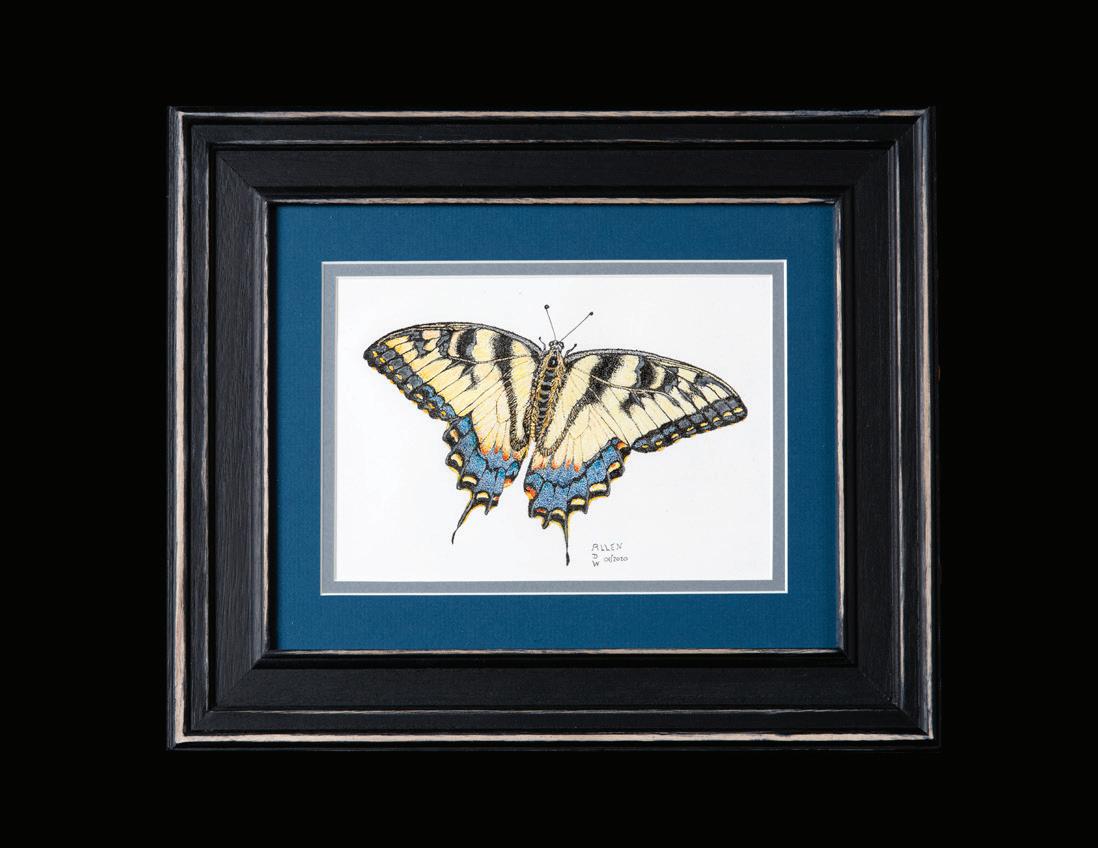
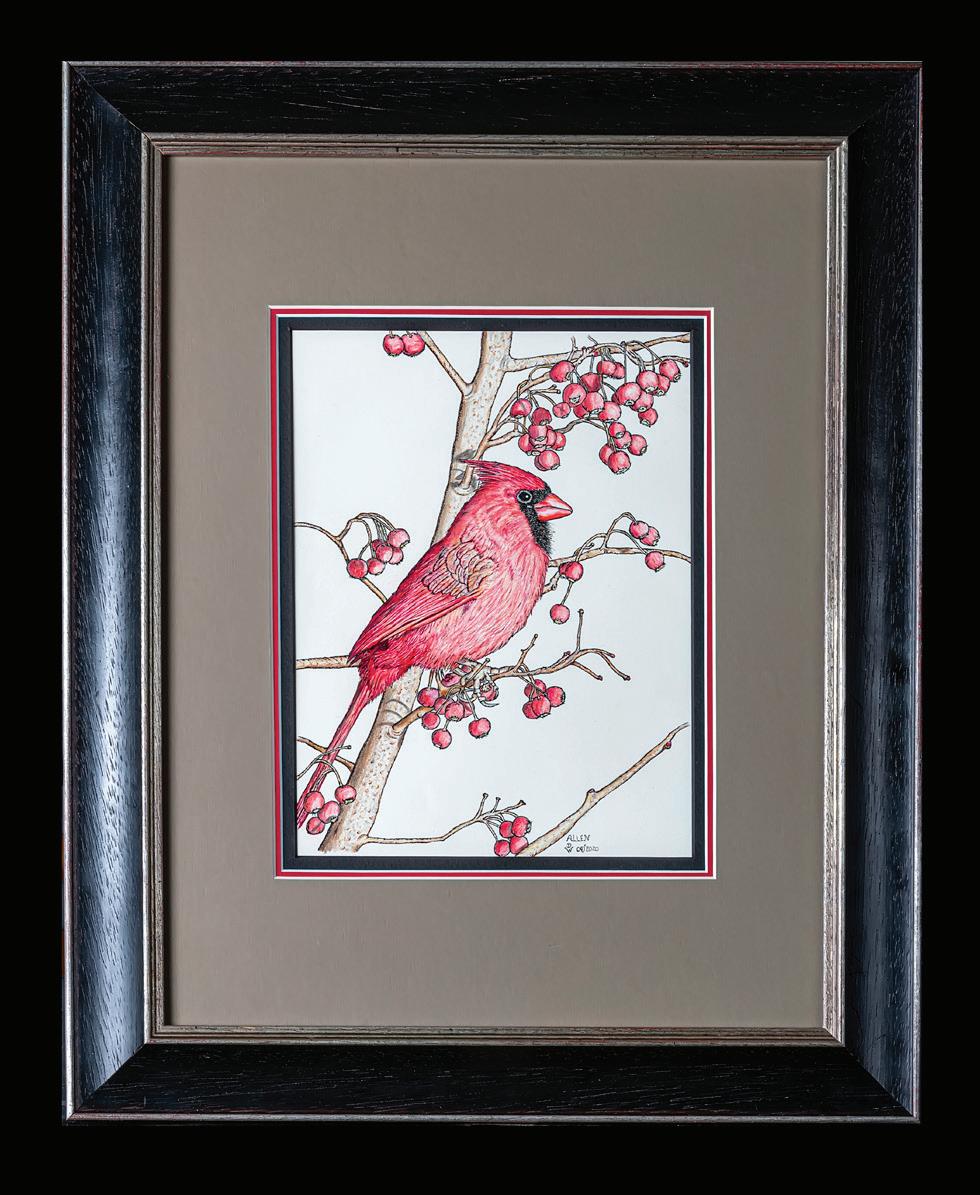
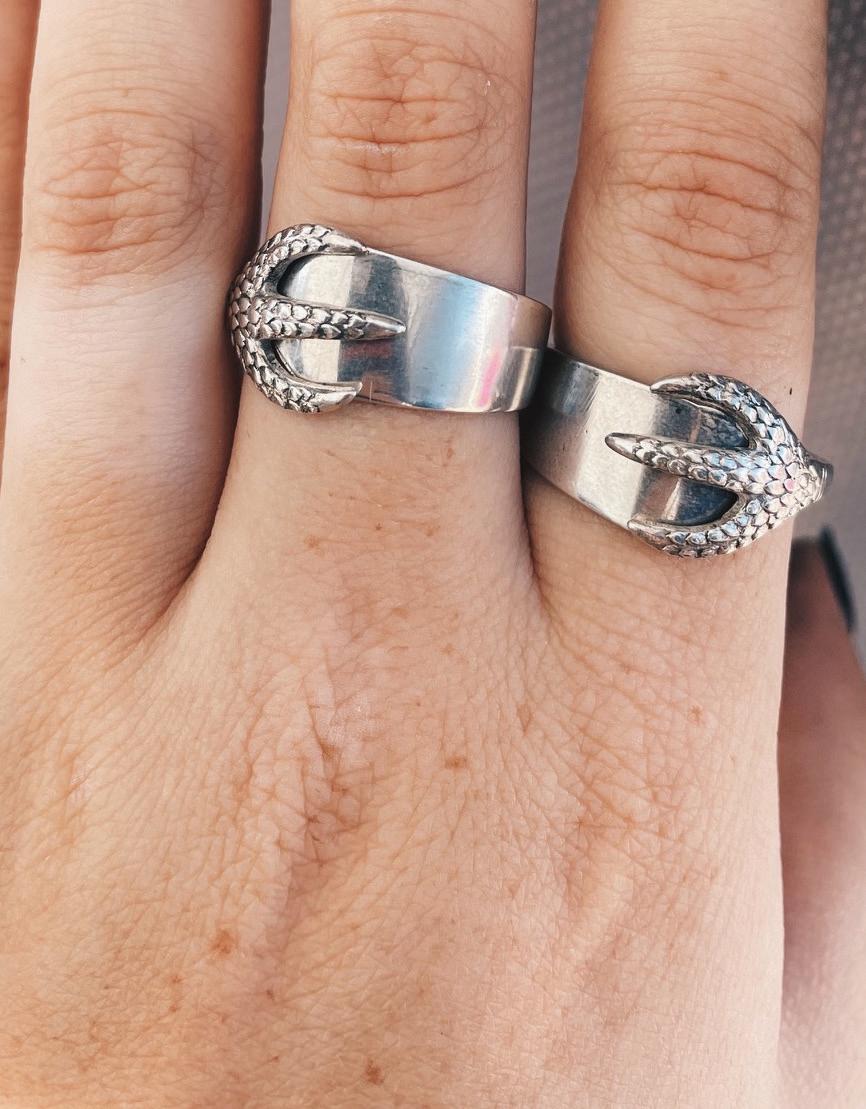

In the modern era, the hippie movement spurred the rise of personal expression through handmade creations like silverware rings. Not only did spoon rings serve as a mode of fashion, but they also were part of counterculture’s rejection of industrial fashion.

All of Starcher’s flatware comes from a commercial provider who organizes estate sales and gives her access to a variety of distinct pieces for her custom creations. Starcher operates out of Grape Ridge, Virginia in the Chesapeake Area and sells her rings in Virginia Beach, Norfolk, Cape Charles, Newport News, and, of course, Williamsburg.
“It’s a beautiful place. I love coming here. It’s like a little day trip for me, coming from Chesapeake, so it’s really awesome,” Starcher said.
Some artists and vendors at 2nd Sundays fully operate out of the Williamsburg area. Since 2015, Williamsburg residents Paige and James Ewell have owned Wildwood Farm, a three-acre property on Ironbound Road that they grew into a farm business in 2017. Since then, the farm has steadily expanded into a spot for visitors. Visitors of the goat and flower farm can also shop at the farm store for handcrafted goods like goat milk soaps, herbal scrubs, and beeswax products.

Paige Ewell, born into a constantly relocating military family, eventually settled in Williamsburg, where she spent the majority of her later childhood in the area after her father’s retirement from service. It was in Williamsburg that she met her husband, James Ewell, who had been born and raised in Williamsburg.
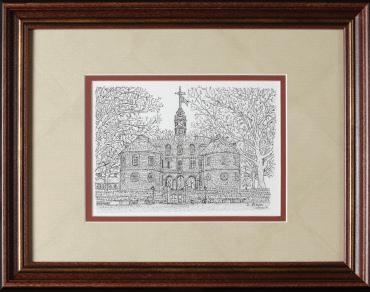
After Paige and James Ewell got married in 2015, the Wildwood Farm business unofficially began, with the couple desiring to prioritize good stewardship of the land they owned. As their website notes, the couple began their farm endeavor with twenty-five golden laced Wyandotte chickens. James Ewell later surprised Paige Ewell on Christmas with two goats, which they named Eowyn and Sapphira. Eowyn gave birth a few months later, prompting the Ewells to discuss what to do with all of the excess milk.
“We got married, and we wanted to live more self-sufficiently off the land, so we got some goats and chickens and started working our way towards that. And it kind of evolved into this farm business. It wasn’t exactly planned, but that’s what happened,” Paige Ewell said.
Paige Ewell’s interest in soap-making inspired her to use the excess goat milk to create batches of handmade soap, which she shared with family members, friends, and co-workers. As word of mouth spread about Paige Ewell’s soaps, local businesses invited her to market her products.
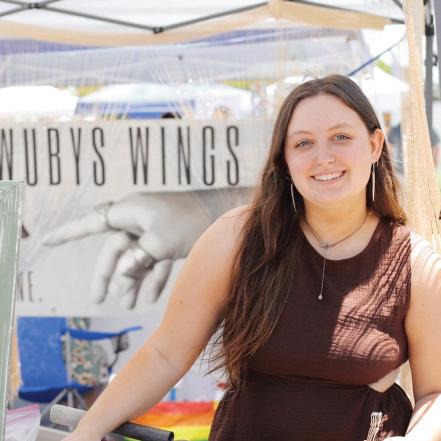
“I really like making soaps. It’s kind of like making art a little bit. You get creative with it,” Paige Ewell said.



The Ewells also make goat milk caramel, which James Ewell insists is his favorite to create.
“We make goat milk caramel. You can heat it up, enjoy it over ice cream, brownies, cookies — or you can put it in your coffee, and it turns into a caramel latte or macchiato. That’s my favorite,” James Ewell said.
The Ewells’ products are currently sold at various stores around Williamsburg — Silver Hand Meadery, consignment shops, and even Ace Hardware. The Ewells also market their products at local pop-ups like the 2nd Sundays Festival, the Peace Hill Farm Fall Festival, and the Newton Holiday Markets.


Currently, Wildwood Farm is not open to the public with regular hours, but it may open during special occasions. Those interested in visiting the farm should subscribe to the Ewell’s newsletter, which notifies and updates visitors about opportunities to check out the property.

Another local business in the Williamsburg area is Point of Focus, a creative art business operated by David Al len with the assistance of his wife Jan Allen. They have been vending at the 2nd Sundays Festival for many years.
David Allen has been creating artwork since he was 11 or 12 years old, typically using pen and ink, colored pencils, color wash pens, and gel pens. David Allen emphasizes pointillism in his pieces, a technique that requires extreme focus and a substantial amount of time to properly execute, taking anywhere from ten to fifteen hours on average.
“I try to do as much detail as I can, because I know the aspects of modern art and impressionism, but I want to bring more emphasis to the detail,” David Allen said. “And God has blessed me. I say, ‘thank you for giving me the patience to do it’.”
One of the signature elements of David Allen’s work is the custom frames that he chooses for his pieces. With 47 years of experience in framing, he is certainly no novice.
David Allen is also a decorative painter by trade and
has done work restoring buildings and with plasterwork. Most of David Allen’s work displayed at the 2nd Sundays Festival was created in the past two and a half years.
In terms of inspiration for his works, David Allen often turns to nature, animals, and historical buildings and settings. He has also done pieces focused on Celtic ideas and designs in recognition of his wife Jan’s Celtic ancestry.
David Allen sells his products regularly alongside his wife at the 2nd Sundays Festival as well as the On the Hill Gallery and the Gallery at York Hall, both in Yorktown, Virginia.
“We’ve been to many shows this year. It’s a lot of work to be able to put this up. We were at a show yesterday, and we had two sales. Of course, you don’t know. It’s give or take. It’s not always about selling your art,” David Allen said. “I know people want to make money, but . . . I want to emphasize my ideas about practice. If you can just do it for ten minutes a day, then you’ve done your artwork. That’s what I always try to make sure to tell people.”
David Allen’s jovial nature and dedication to the intricacies of his work are evident in his pieces, which range from beautifully detailed depictions of animals such as owls, frogs, and birds, to delicately structured portraits of his torical buildings.
“It’s not always about selling your work,” he said. “It’s about connecting with fellow people who are artists and encourag[ing] them as well . . . I thank God that he has given me this talent, and I want to be able to push this talent forward and . . . have people like it as much as possible.”
The 2nd Sundays Festival has been under the nonprofit organization Lovelight Placemaking since the spring of 2020. Students, residents, and tourists attend the festi val, enjoying the experience of exploring the booths and musical spaces.
“I recommend they see and do it all,” Vermillion said. “Savor every booth, strike up a conversation, and discover the story of each artisan. What I love about 2nd Sundays is that it provides a relaxed, informal atmosphere where patrons can sample a variety of art forms.”
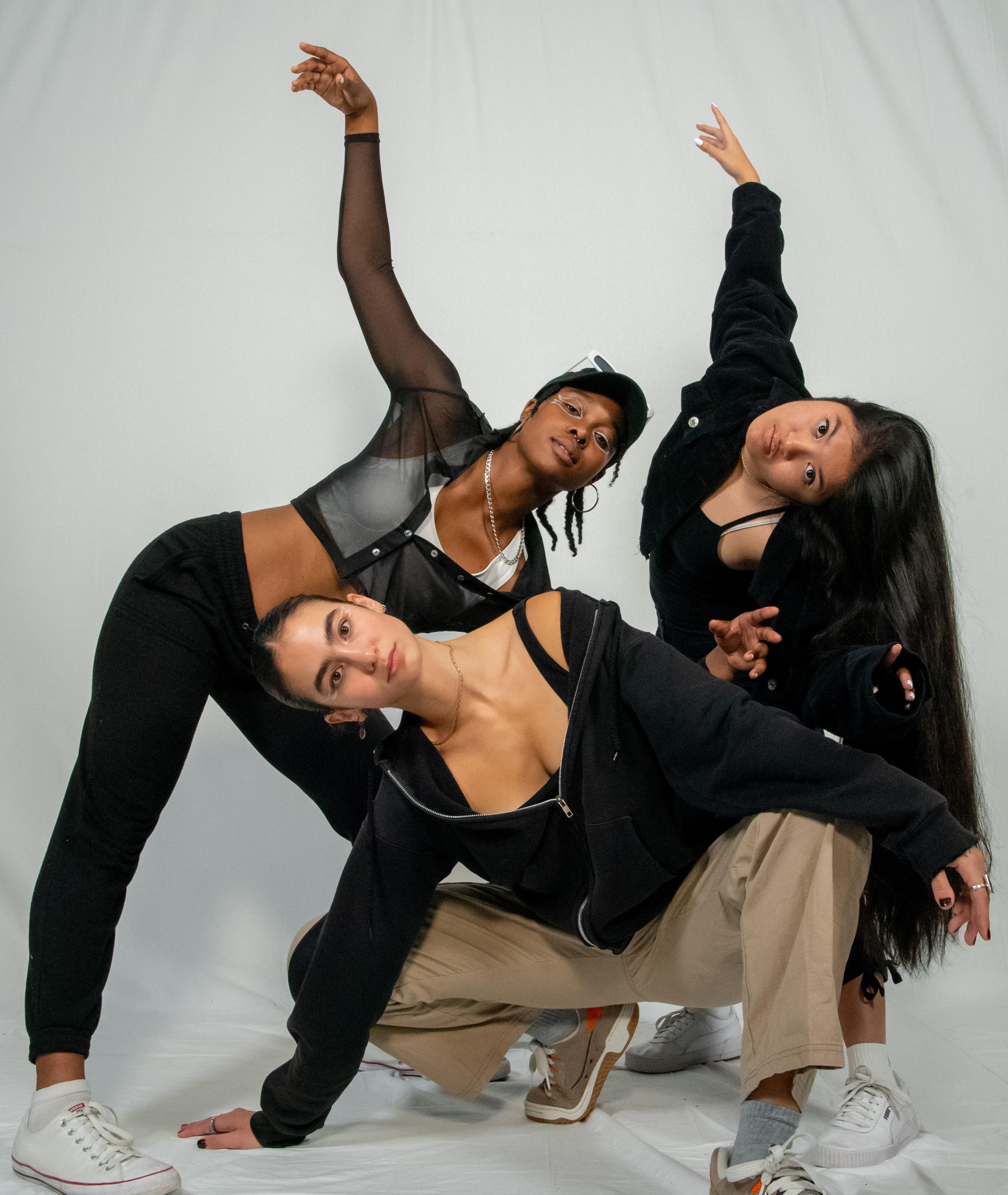
Hip-hop is the perfect embodiment of movement in both its nature and history. With roots in the 1970s Bronx, what started as block parties of various Black, Latine, and Caribbean-American communities quickly became the start of a genre — one that was unapologetically new and vibrant. Since its birth, hiphop has undergone many evolutions, but its power, energy, and conviction remain unchanged, hence why we chose to feature Syndicate in our “Movement” issue. Their eccentric poses, intuitive improvisation, palpable enthusiasm, and fierce synchronicity masterfully contribute to the enduring legacy of hiphop.
–Marion Biondi ‘24 Flat Hat Magazine Style Editor
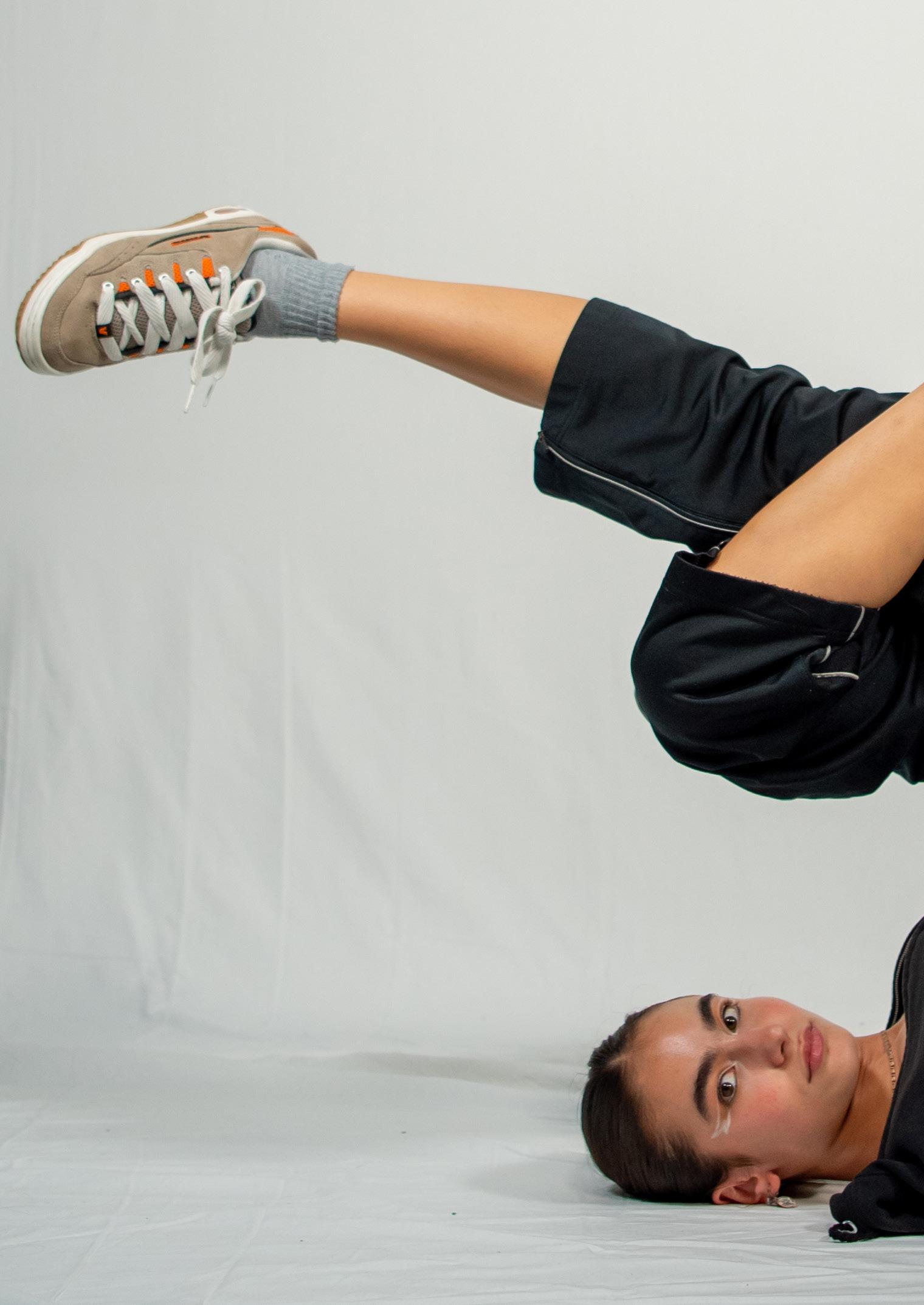




It’s rare that we encounter protest without sound. This sound can take many forms, whether it be that of swelling reverberations of vocal chords, groups chanting mantras of revolution, or voices singing in solidarity. We hear marching, flashes of cameras, chatter, and even intentional silence. Perhaps no sonic medium captures the spirit of protest, however, quite like music.
The notion that protest is manifested in mainstream music may appear contradictory on the surface; we expect alternative music to carry the counterculture — but hear me out. Popular music occupying mainstream sonic spaces finds its way to larger audiences of people across the country more than any other musical genre. One of my favorite ways to study American history and culture is through artistic movements, whether that be literature, visual art, dance, or music.
Social movements and music, particularly, have gone hand in hand throughout history. In my listening experience, I’ve stumbled across a handful of songs that were immensely popular at different times throughout the years, but have since become lost to history. These songs are not necessarily those we recognize as national anthems of protest that still relate to contemporary social justice movements in the way that we know Bob Dylan’s “Blowin’ in the Wind,” Public Enemy’s “Fight The Power,” or Bob Marley’s “Redemption Song” to be enduring protest songs.
The songs I wish to highlight are those that played critical roles in supporting social justice movements in U.S. history and have since fallen by the wayside in our cultural memory. By listening to and learning about these songs, we hear sentiments that still resonate today, illustrating the possibilities of popular music to capture, market, and disseminate sentiment across not only geographical space, but also time.
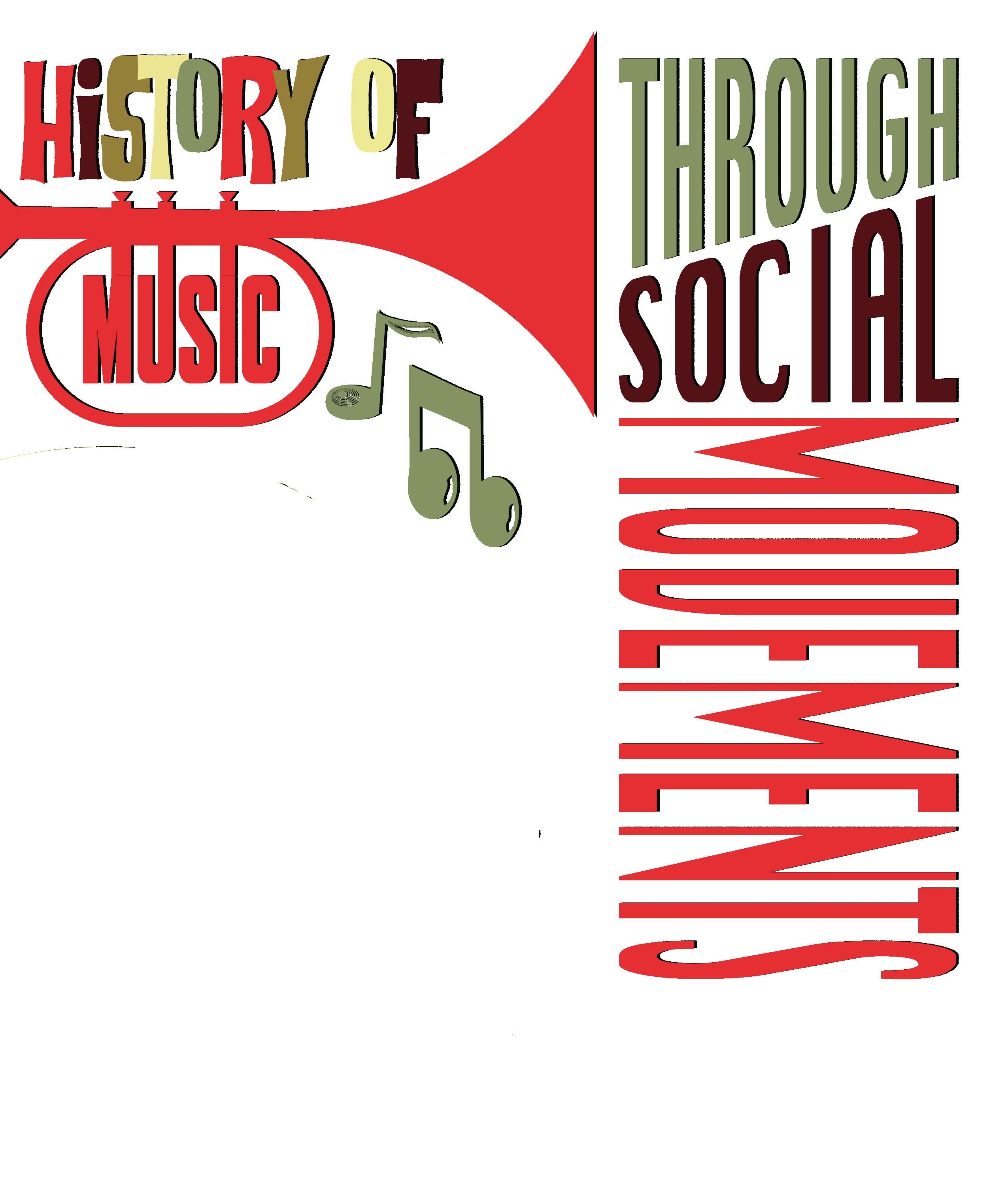
The Beach Boys are known for their jovial, harmonious pop songs about catching waves, surfing, good vibrations, and wishing everybody had an ocean to enjoy the outdoors. Kicking off their 1971 album, Surf’s Up, however, is a message that completely contradicts their brand.
“Don’t Go Near the Water” is an anthem for the environmental justice movement, begging listeners to leave their surfboards at home. The lyrics urge, “Let’s all help the water right away, do what we can and ought to. Let’s start today,” and plead, “Let’s avoid an ecological aftermath, beginning with me, beginning with you.”
Without listening to the lyrics, “Don’t Go Near the Water” sounds like your typical Beach Boys tune, complete with vocal harmonies and piano melody. In actuality, it provides yet another example of the power of a pop song to carry messages pertaining to social — and even ecological — issues to large audiences of people in an extremely catchy manner.
Leave it to The Beach Boys to create doo-wop harmonies out of “ah-uhm dirty water,” leaving listeners with an ecologically-conscious mantra that’s almost invisible to the ear unless you make the effort to lean in and listen just a little closer.
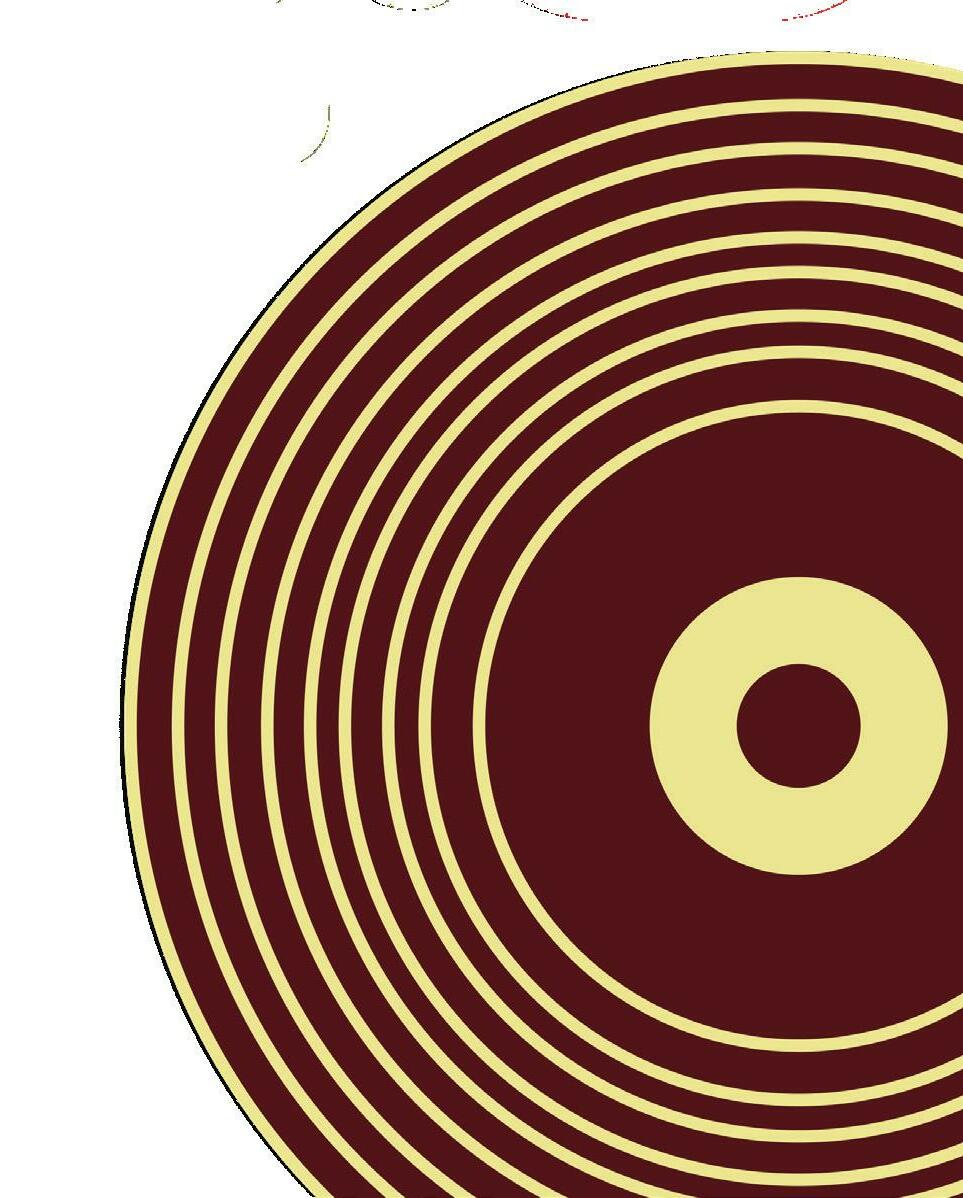
“Sisters
When Annie Lenox of the British pop duo, Eurythmics, wanted to write a song for the international women’s movement in 1985, she turned to one of the greatest female American singers of all time, Aretha Franklin, to deliver the lead vocals.
In the song’s second verse, Franklin declares the purpose of the song: “to celebrate the conscious liberation of the female state.” Lennox and Franklin sing the chorus together, proclaiming, “Sisters are doin’ it for themselves, standing on their own two feet, and ringing on their own bells.”
The song’s verses detail additional ways in which women are challenging gender stereotypes, including women becoming doctors, lawyers, and politicians. To supplement its revolutionary lyrics, “Sisters Are Doin’ It for Themselves” has a funky disco beat that gives the song popular appeal.
“If
The oldest song on this list, “If I Had a Hammer,” was written by Pete Seeger and Lee Hays in 1949 as a response to the 1948 presidential election and the Progressive party. The song’s verses theorize what the singer would do if they had a “hammer of justice,” a “bell of freedom,” and, finally, a “song to sing.” Ultimately, the singer repeatedly engages in the refrain, “I’d hammer/ring/sing out love between my brothers and my sisters all over this land.”
The hammer symbolizes the working class, and the bell represents liberty, calling for justice, workers’ rights, and peace. From a music theory standpoint, “If I Had a Hammer” is built on the I, IV, V, and VI chords, which are the backbone of popular music. In this way, “If I Had a Hammer” is the perfect example of a socially and politically conscious pop song with the power to resonate with social movements for years to come.
While initially recorded in 1950 by Seeger and Hays’ folk group, The Weavers, the song has been rerecorded by dozens of artists, which prolonged its popularity into the early 1960s. In 1962, the folk trio Peter, Paul and Mary recorded “If I Had a Hammer” and found themselves a #10 hit on the Billboard music charts.
This sparked a chain reaction of rerecordings by a variety of artists in the years to follow. In 1963, singer and guitarist Trini Lopez acquired his first hit with his cover of “If I Had a Hammer.” The song was also covered by Motown superstars Martha and the Vandellas for their album Heatwave.
In 1964, soul star Sam Cooke wowed an audience with a performance of the song at the Copacabana, a white nightclub in New York City, captured on his Live at the Copa album. What’s fascinating about Cooke’s “If I Had a Hammer” is that he engages his white audience in a singalong and a call and response of a spirited “Yeah!” illuminating the song’s ability to unify people on the causes of justice and freedom regardless of their identities. Enduring into the ‘70s, “If I Had a Hammer” continued to be covered by such artists as Johnny Cash, Wanda Jackson, and Bruce Springsteen.
These are only a few examples of the many pop songs containing social justice messages that exist in our tremendous cultural discography. These songs illustrate that pop music can be used as a tool for protest, as it positions ideas and perspectives right under our noses, disguising them as radio-friendly songs that wouldn’t generally receive a second thought. People have always been speaking out about social injustices in popular culture, from environmental justice to female empowerment — we just have to listen a little closer.
Our generation has a fear of irrelevance. Social media has made us both competitors and stakeholders in today’s attention economy as we fight to stay interesting and interested. One consequence of this? An obsession with branding and rebranding ourselves — and I worry that it’s doing more harm than good.
We all know our friend “Sad Girl.” You know, those who listen to Lana Del Ray and Phoebe Bridgers on vinyl, embody #prettywhenyoucry 2014 Tumblr vibes, and have an air of mystery about them — not in a weird, dramatic way, but in an ironic, self-aware way. Then, we have the distant cousin “Soft Girl” — pastels-only ultrafeminine in a cutesy, dainty way. And let’s not forget her evil twin “Reputation Era” (an homage to the Taylor Swift album), characterized by a dark and vengeful phase of unbothered energy, power, and self-assurance (while maybe lifting heavily at the gym).
There are more, of course, like “That Girl” or “Indie Girl,” or being in your “Fleabag Era” or your “Flop Era.” We’ve heard them all — these hashtags get millions, even billions of views on TikTok. Why are these labels, these “brands”, so popular? Why do we care?
Honestly, we need them to cope. We are subjects of “reality via social media.” It may sound paradoxical, but in addition to our real-world consciousness, we have literally been confronted with a disjointed, skewed version of reality
through discrete images and videos that we post online to be perceived. From social media have come profiles and feeds available for followers to see at any time, and we attach incredible value to them. We’ve all been drilled about how social media is not the whole picture of who someone is as a fully-fleshed human being with emotions, desires, thoughts, and aspirations, and yet there is an unspoken acknowledgment that your social media presence has implications about you.
As we reduce ourselves to images on a screen, we inevitably attach an aesthetic — a brand — to who we are (our obsession with Pinterest doesn’t help either, but that’s an entirely different article). We aestheticize ourselves, cherry-picking which parts of our “brand” — that image of ourselves we want to curate — to highlight and put forward. It nudges us into categories that overgeneralize who we are: this vibe or that vibe, good or bad, valuable or insignificant.
We take advantage of these brands as a way to control how we are perceived by others, which is a dangerously addictive concept. I think this explains why there has been a push to “make Instagram casual again” and why platforms like BeReal have gained serious popularity.
But isn’t this just more nuanced branding in disguise? Now, not only do you have to curate your image, but you cannot look like you are trying too hard to do so. We must walk the fine line of effortlessly casual, vulnerable, and sincere without caring too much or being too messy. It’s exhausting and ironic that if you want to appear unbothered, you have to, in fact, care. Such is the great logic of our generation.
One sad truth of it all is that in order to even be concerned with perception, we must step outside of ourselves to imagine how other people are seeing us. It’s almost dissociative. Because we are reduced to an image, an aesthetic, a brand, we are constantly evaluating how we look to our audience. The nature of social media and perception is dissociation. And it’s incessant. Not to mention, it can tempt us in our actual reality, in which we inevitably become disappointed when we can’t curate ourselves as living, breathing human beings the way we can a profile of ourselves. We are left to our mediocre-by-comparison existence — dissatisfied, frustrated, and disoriented. Not a good sign for our collective mental health. What’s more is that one natural consequence of this constant monitoring is ... boredom. As creatures of novelty and short attention spans, we lose interest quickly and search for a more exciting replacement — hence, rebranding. And back to the dissociation piece of it, we are also painfully aware of others losing interest in us, too. Comedian Bo Burnham verbalized this desperation to constantly be noticed when he said, “If my life isn’t viewed, I’m not real. If I’m not seen, I don’t exist.” Social media and branding have reduced us to objects whose value is fleeting and conditional on how noteworthy we are. Burnham continued, poignantly, about today’s attention economy and how kids today are not “bullied as much as they are ignored.” We seem to have outgrown overt insults and opted for a much more insidious weapon — ignorance. It’s not outright rejection but more a lack of attention; not the presence of malice but the absence of admiration. So, we fight tooth and nail to stay relevant and avoid mediocrity.
It becomes even more complicated when you think about the implications of some of the more popular labels themselves. Buzzfeed writer Emmeline Clein writes about the “platonic ideal of the beautiful, depressed woman”: “Sad Girl” borders on glorifying mental illness and disempowers us into learned helplessness, “Fleabag Era” encourages the use of mockery and self-deprecation to cope, “Reputation Era” demands ruthlessness and scoffs at vulnerability, and “That Girl” places productivity and perfectionism on an unattainable pedestal.
Part of the problem of these labels lies in their tendency toward the extreme, which is also at the heart of why brands can be so toxic. They overgeneralize and erase the inherent variation of the human experience as if we are onedimensional. I don’t blame us, though — it’s become part of our culture as young people on the internet and a way to survive the simulation of reality that is social media. However, it comes at a cost, and I doubt we will ever really be able to escape it. And so we cope.

The Waste and Resources Action Programme estimates that about one in four people in the U.K. will buy clothes for the holiday season and discard them shortly afterward. On this side of the Atlantic, Americans throw away a whopping 81 pounds of clothing every year.
Against the backdrop of looming ecological degradation, Generation Z seems to be taking up the mantle of environmental activism. Research shows that over 70% of Gen Z prefer to buy clothes from sustainable brands and are willing to spend 10% more on eco-friendly items.
Yet members of Gen Z are also the biggest consumers of fast fashion. Without a real shift in mindset, the efforts of our generation to set the industry on the right track will remain futile.
In recent years, “ultra” fast fashion companies like Shein, Boohoo, and PrettyLittleThing have begun to supersede the original fast fashion powerhouses like H&M and Zara. Operating primarily online, these companies eschew the traditional trend cycle and use algorithms to scour the internet for the latest “it” clothes. Thus, Shein can release more than 7,000 new items every day at jaw-droppingly low prices.
We simply do not need this much stuff. And yet, despite growing awareness of the fashion industry’s degradation of the planet, the industry seems to be on steroids. In the words of former Timberland COO Kenneth P. Pucker, all the sustainability efforts “over the past 25 years have failed to lessen its planetary impact — a loud wake up call for those who hope that voluntary efforts can successfully address climate change. . . .”
If it doesn’t seem this way to the average consumer, you can blame greenwashing. When you walk into Mango or Arket these days, odds are that the brand tags will boast that the items are “sustainable,” “responsiblysourced,” or “recycled.” While these gestures are a step in the right direction, the effort shouldn’t stop there.
Another example is Shein’s latest resale platform, Shein Exchange, which is an app that will allow users to buy and sell used Shein clothing, which, according to the company, is a bid to address textile waste. But when Shein’s clothes typically sell for $5 or $10, it’s hard to imagine how they could survive twenty more washes in another person’s closet. The marketing is merely a ploy
to trick consumers — particularly younger, and more easily swayed shoppers — into thinking that they do not need to change their shopping habits.
Moreover, the sheer amount of social issues that activists and concerned consumers advocate online overwhelms our processing capacities. Veronica Barassi, a professor of media and communications at the University of St. Gallen, explains this difficulty in her essay “Social Media, Immediacy, and the Time for Democracy”: the need for conciseness and relatability inevitably forces activists to condense the “space and time to articulate their political reflections.”
Many in Gen Z are familiar with Instagram photo carousel infographics highlighting various injustices around the world and what people can do to help. Plenty of them cover fast fashion’s toxicity and exploitative practices, but they do not create real channels for reform. Sure, they might link a petition for brands to sign an accord guaranteeing workers’ rights, but merely feeding people this information does not spur a collective effort to make the industry prioritize the planet and people over profit.
For a meaningful effort to materialize, Barassi argues that it must come from “action on the ground. . . face-to-face interaction, discussion, deliberation and confrontation.” This means that tweeting angrily at Boohoo for naming Khloe Kardashian their sustainability ambassador is merely a form of complaining. It’s a superficial level of backlash that a Kardashian can deflect by issuing a lazy statement about wanting to promote change. Without a grassroots effort, centering our resistance against fast fashion falls prey to one of social media’s biggest pitfalls: the fleetingness of social media networks. As Barassi says, online networks are “often based on a common reaction / emotion” rather than “a shared understanding of social conflict.”
In other words, people vent and then move on — which is exactly what the industry wants. An inundation of bad news numbs us to the abuses happening every day. Remember Rana Plaza? In 2013, a sweatshop in Bangladesh producing for Walmart, Primark, Benneton, and other global brands collapsed, killing at least 1,132 people and injuring more than 2,500 people. With the breakneck speed at which ultra-fast fashion companies are pushing, another Rana Plaza catastrophe is bound to happen soon.
Over Halloweekend 2022, my social media feeds were brimming with costume photoshoots. While I admired my friends’ creativity, I wondered where the costumes would end up — repurposed for next year or in a landfill?
Meanwhile, the workers who produce our clothes under horrendous conditions stand alone in their protests against injustices committed by brands and manufacturers. The global supply chain remains as murky as ever as companies subcontract to companies that subcontract to still more companies in pursuit of greater profit margins.
So, here is my appeal to you: STOP BUYING!
Yes, really. But this is not a tirade against anyone purchasing fast fashion — I understand the financial, size-inclusivity, and convenience reasons — this is an appeal to you, a student of the College of William & Mary who will graduate with a degree that lands you a well-paying job, granting you purchasing power that allows you two choices: perpetuate the fashion industry’s sins or push for change?
The next time you want to purchase clothes, ask yourself three questions:

1.Does this fit my style?
2.Will I wear it 30+ times?
3.Do I already own something similar?
You can easily save yourself the hassle of getting rid of unwanted items by not making an unnecessary purchase in the first place.
Alternatively, the booming secondhand market contains troves of beautiful, unique items in excellent condition. eBay, Depop, Poshmark, Vinted, and Mercari are just a few online resale platforms one could shop on. When the pace of production far outstrips our ability to generate renewable solutions, it is difficult to overstate the importance of giving clothes a new life. This step is key to forging a “circular fashion economy” and reducing the demand for virgin materials.
Perhaps the most striking example of the consequences of overconsumption is the Kantamanto Market disaster in Ghana, where five million pounds of discarded clothing (or “dead white man’s clothes”) were exported weekly until a fire gutted the market in December 2020.
Though consumers should be responsible for making more conscious choices, they should not stand alone in the fight. The government could compel retailers to abide by labor conventions and release more
environmental disclosures. In New York, legislatures introduced the Fashion Sustainability and Social Accountability Act, which would require all companies making more than $100 million to make more environmental disclosures and guarantee they conduct ethical business practices. But currently, Congress has not tried to rein in fast fashion companies’ unchecked production methods, flooding our landfills with more toxic waste.
The industry’s woes are not any one consumer’s fault — but that does not absolve you of responsibility. Instead of turning away from actionable solutions because you feel like small changes are futile, we should all reframe our thinking and clean up the mess that our overconsumption-oriented psyches created. You do not need to be a perfect consumer or even reject fast fashion altogether.
Instead, we all need to be more self-aware of our universal participation in this global system of structural inequalities. Supply chains and labor laws are surely complex, but the path to justice is crystal clear. Remember that it is never just a cotton t-shirt — every garment you own is a reminder that you are inextricably connected to the marginalized and exploited workers who “supply” your closet and keep you warm. Complacency has no place in this collective struggle — what will you choose?
As the air gets cooler, the Flat Hat Magazine staff would like to recommend a catalog of songs that will get your blood moving. When these tunes come on, you cannot help but move. Dance down Electric Ave listening to these groovy jingles by scanning the code above.

“Twistin’
There’s really nothing like live music to make you want to dance, but even more so when you add Sam Cooke’s flawless vocals, King Curtis’ swingin’ band, and song lyrics about doing the twist into the mix. If I had a time machine, my first stop would be Miami’s Harlem Square Club on January 12th, 1963 so that I could twist the night away to the music of one of my favorite vocalists of all time.
-Mary Beth Bauermann ‘24
If the 80s band at my junior prom had played this song, it’s possible that the guys awkwardly standing on the sidelines scowling and refusing to dance would have had a change of heart. The beat is unbeatable (pun intended). I’ll admit that I have even danced to this song while putting groceries away, chanting “What if I were Romeo in black jeans” like I’m in some sort of emo Shakespeare cult.
-JR Herman ‘24
Jon Batiste is perhaps one of the great musical geniuses of our time, but he’s not pretentious about it, as evidenced by the joyful, grooving, “gen-u-ine” “I NEED YOU.” Without taking a break from musical and lyrical brilliance, he crafts a song basically insisting that you dance. For its 2-minute 37-second run time, you’re on a sunny street in New Orleans or dancing the lindy hop in a 1950s New York jazz club. And “in this world with a lot of problems,” it’s exactly what we need.
-Mary Trimble ‘23
Honestly, this entire album is perfection, but “Pure/Honey” makes me feel like the baddest bitch on campus. Strutting to class with the lyrics “It should cost a billion to look this good” reverberating in your stapedius. . . chef’s kiss.
-Ellie Kurlander ‘24
This intoxicatingly wavy and visceral song comes on, and I feel like I’ve been injected with five
pounds of ecstasy. I have no choice but to start moving, suddenly convinced I have what it takes to make Syndicate.
-Marion Biondi ‘24
“Get
There’s something about this song that truly makes you want to bust a move. I hear the opening measures, and I’m immediately hooked. It’s catchy, it’s groovy, and it gets stuck in your head for days. And honestly, I’m not gonna complain about it.
-Rebecca Altman ‘25
In eighth grade, I walked down the halls blasting this song in my headphones thinking I was the baddest bitch in school (I was). I begged my mom for Hayley Williams’ iconic orange hair because of the music video, and I spent many nights performing this song on my bed with a flashlight as a microphone. Is there a better song to jam to? No.
-Emma Saunders ‘24
“#thatPOWER” by Justin Bieber and will.i.am
I memorized the entire #thatPOWER Just Dance when I was 9.
-Kay Carter ‘25
“Beyond
I’ve never been one for dancing, but once when I was younger I found myself with my first girlfriend in a parking lot overlooking the Pacific as the sun faded below the horizon. Something compelled me to put this song on and slow dance with her. I impressed no one with my dancing, but it still made her night and mine. I’ve used it since for similar reasons, to great effect.
-Ethan Kula ‘24
I grew up dancing competitively, and this song was one of the first songs I danced to with a group in competition — I dare you to ask me to do my sixth-grade dance to this song. I still remember the entire thing.
-Livia Martinez ‘25
“Busy
limbs until I’m wildly gesticulating and bouncing along to the beat. It’s also just a beloved inside joke with my boyfriend, as I make a point to pull out the most extreme, silly dance moves every time this song comes on — we always end up laughing our asses off. Also, for the record, it’s the perfect walk-up song; if I were ever to fight in UFC, I would walk out into the ring to the first 35 seconds of this song, arms raised and confidence soaring.
This song is a bop. It’s the kind of song you get so into that afterward your head kind of hurts because you jumped and head banged just a little too hard. Whenever it comes on, I have to listen to it at least three times in a row before I’m willing to move on. I am convinced I could listen to this song on repeat for an hour in my car and dance the entire time.
-India
This song’s epic intro is what really gets me into my groove, injecting jolts of electricity through my
“Move
by Lewis OfMan and Carly Rae Jepsen
Released by OfMan a few months before CRJ’s newest album “The Loneliest Time,” this disco dance-pop-inspired collaboration is sure to make you move. This song is relatively undiscovered but deserves significantly more spotlight. Jepsen provides angelic, almost sassy vocals, while OfMan delivers a strong bass line and piano-based chords. The song generally feels like a collaborative dance between two partners (lovers?) moving ever so close as the song closes.
-Justin
Not only is the message of the song applicable and rewarding, but the strumming of the guitar mixed with her vocals always makes me want to dance. As a Gemini and a highly sensitive person, my moods are flippant and powerful, a combination this song addresses and celebrates. If you want a pick-me-up or something to groove to in your room with your cat like me, then definitely give it a listen.
-Georgia Thoms ‘23
I spy a clip, a chopstick, a mask, a flask; A crystal that’s small, a crystal that’s big, a singer that makes you do a jig;
NyQuil, DayQuil, a Claw and Tums, an Idiot, a fidget, and a single Magnum
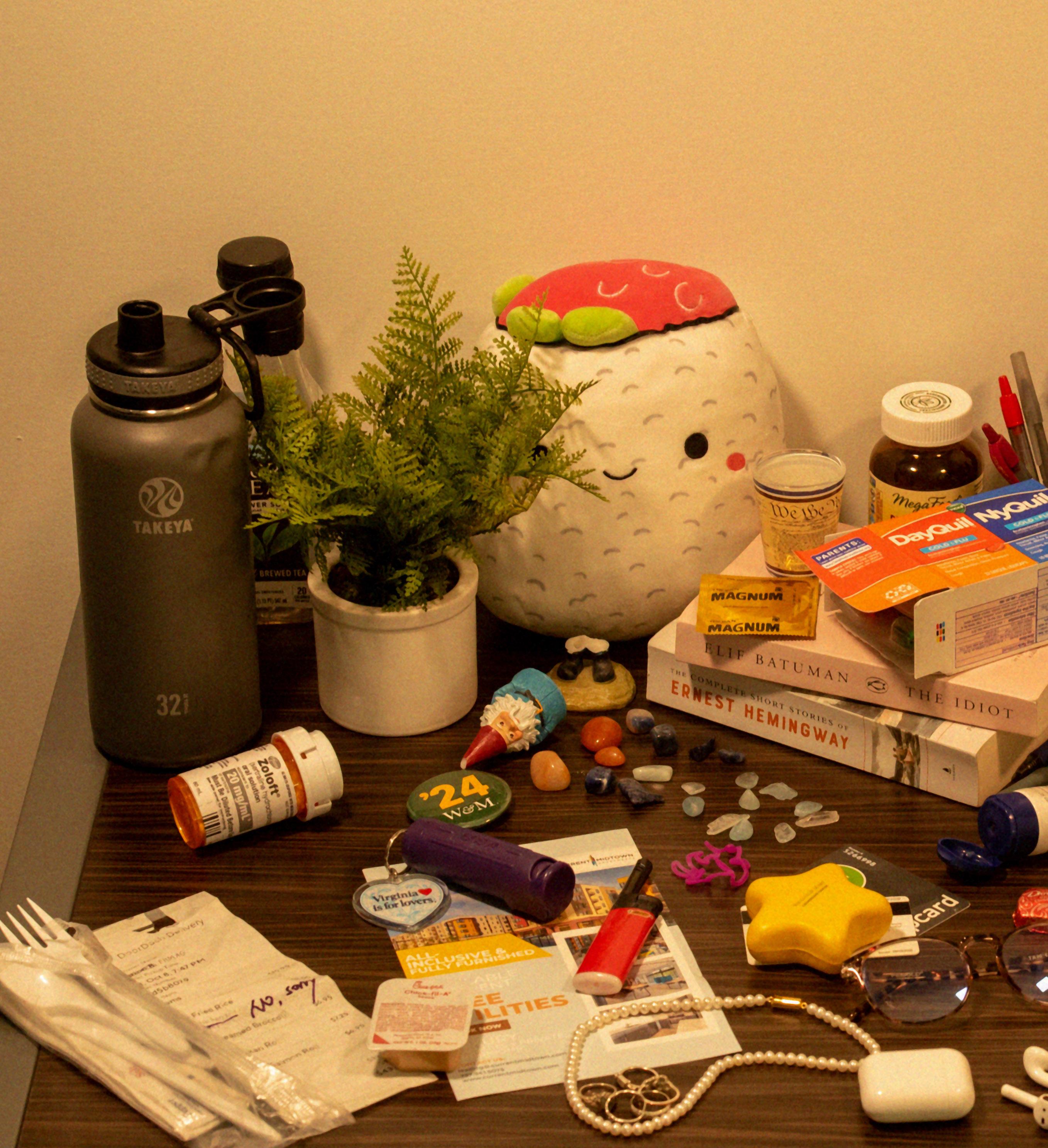 Produced by Marion Biondi ‘24
Produced by Marion Biondi ‘24

I spy a bike with a flat, a paper with a hat, a griffin, an egg, some Sudafed
A sheep ready for registration, a squirrel with selfdetermination

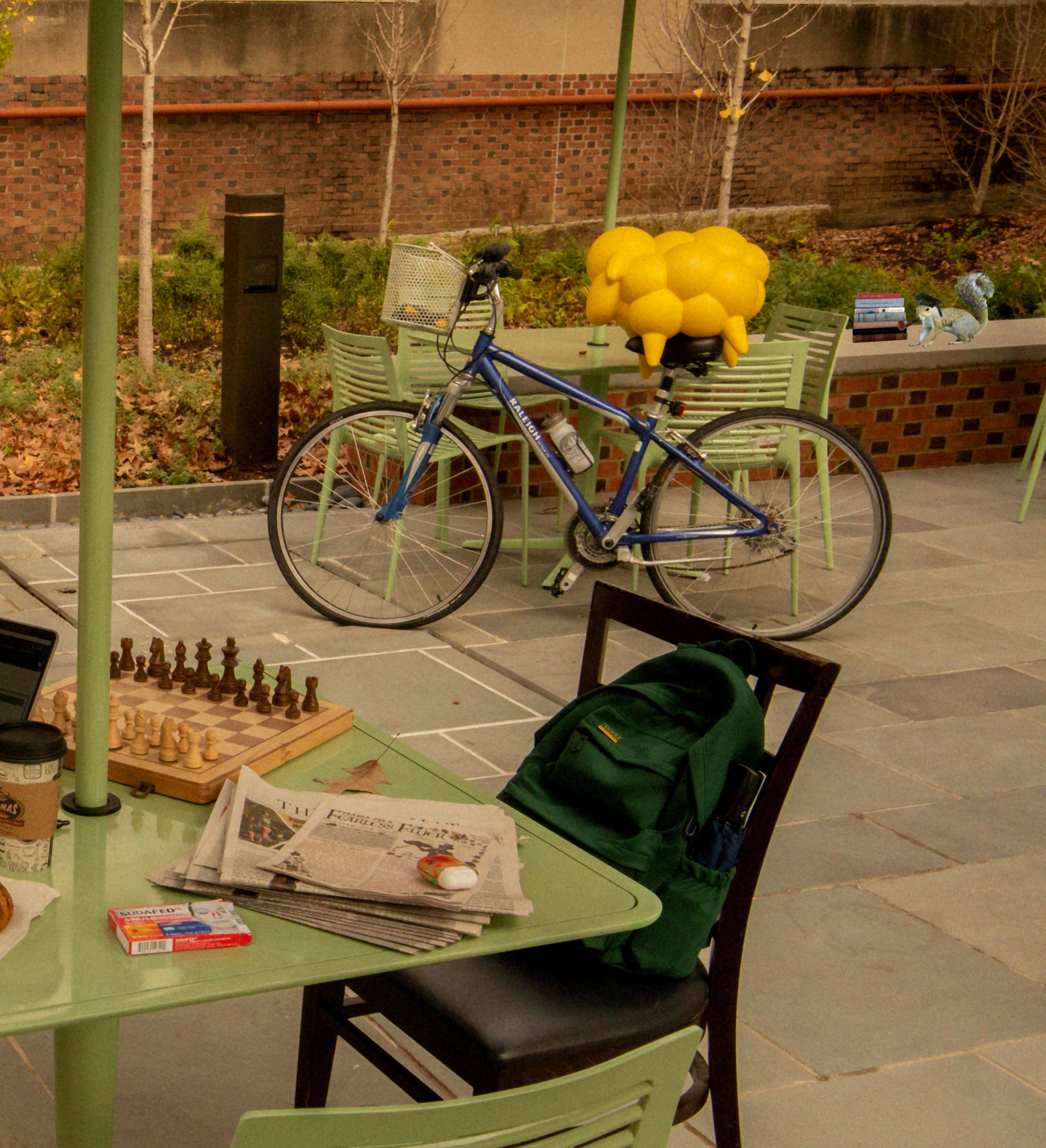
skipping class “just one time” is the worst gateway drug I’ve ever taken
You know you’re down bad when seeing two squirrels playing makes you lonely

They really think hiding the tribe truck will make us forget about it - sorry kathy but most of us have object permanence
Good guys are found in every corner of the earth. Unfortunately, the earth is round
I was supposed to meet up with someone from the barefoot club but they bailed on me at the last minute guess they got cold feet
s/o to the guy I met up with in tucker two weeks ago... you might want to go get tested for syphilis
The term boyfriend implies the existence of boyfoe. This is a service I am willing to provide.
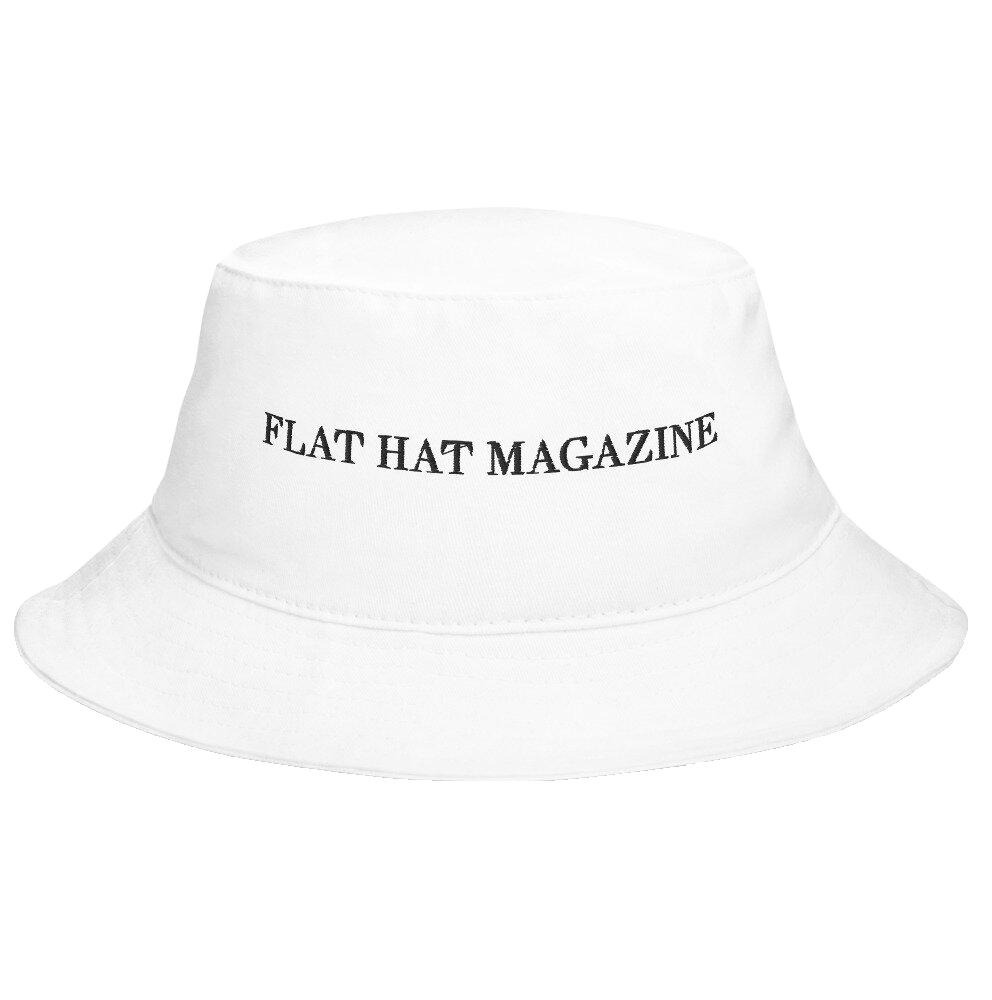


 Story by Emma Henry ‘25
Story by Emma Henry ‘25
On June 24, 2022, the U.S. Supreme Court overturned Roe v. Wade, the 1973 case that guaranteed a constitutional right to abortion. The debate regarding abortion, however, is not a new one and has made its presence known on college campuses around the country. But how exactly does the debate function amongst students and faculty at the College of William and Mary?

Malise Foss ’24, the current Young Democrats Vice President, attended a debate between her organization, Young Independents, and College Republicans during her freshman year. As part of the discourse, the topic of abortion was set on the table to stimulate conversation.
“We had a debate, and it went very, very poorly. I believe it was hosted by our debate organization on campus,” Foss said. “Some of the College Republicans said some very not okay things, and then it was a whole big thing that happened. And I think since then, the Young Dems have been hesitant to do anything like that again because of how, kind of, spectacular, for lack of a better word, the last time was.”
With the overturn of Roe v. Wade on June 24, 2022, conversations and debates about the political, ethical, and medical aspects of abortion have increased exponentially worldwide. The day of the Supreme Court ruling, protests broke out in cities across the country. That same day, Planned Parenthood, a nonprofit pro-choice reproductive healthcare organization, issued a statement on Twitter stating, “we can’t, and we won’t back down now,” while nonprofit pro-life organization Live Action tweeted that the overturn was a “celebration” with “more work to be done.”
The debate surrounding abortion and women’s rights is not new at the College. Articles covering the topic of abortion at the College date at least as far back as 2006 on The Flat Hat’s website. In the past four years alone, campus demonstrations have included the Center for Bio-Ethical Reforms graphic anti-abortion protest in 2019 (an organization unaffiliated with the College), VOX: Planned Parenthood Generation Action’s counterdemonstration that same year, panels hosted by
VOX in 2019 and 2020, Tribe for Life’s “Cemetery of the Innocent” this past September, and various speakers hosted by both VOX and TFL over the course of their duration on campus.
The conversation surrounding reproductive and abortion rights on the College’s campus continues today. How do leaders of organizations, students, and faculty members feel about campus discourse? And how does the College create a space for these conversations?
Interest in abortion-related conversations has skyrocketed at the College, with Professor Chandos Brown recalling his efforts to introduce a history class on the topic in 1997. At the time, only one student enrolled in the course. His current seminar, “Abortion in America,” reached its maximum capacity almost instantly during registration for fall of 2022.
“I’m retiring the year after next, so I don’t know what kind of a future this course has,” Brown said. “But I get the impression that, insofar as the 16 in my seminar represent campus attitudes, there is a deep and passionate interest in this subject.”
It is difficult to gauge the entirety of campus attitudes regarding abortion access; however, representatives from VOX, Young Democrats, as well as various professors on campus, voiced their belief in a majority pro-choice/pro-abortion student body.
“In our eyes, there is not much of a debate on campus, it is more separate groups expressing their own views,” the VOX Executive Board expressed in an email. “These groups often express these views in very public ways, which can force a ‘debate’ into the broader campus community. Especially with platforms like YikYak, which allows for complete anonymity, it can be easy for people to share their views without repercussions, and this can lead to intense, inflammatory conversations that are not based on any sort of evidence or facts; it’s just people hurling insults at each other.”
Both Professor Brown and Professor Claire McKinney discussed the lack of diverse beliefs expressed in their classes, with most students in support of the right to abortion. McKinney mentioned that many students interested in advocacy gravitate toward her classes, while Brown noticed that though his class is geared toward the
historical aspect of abortion, his students tend to gravitate more toward pro-abortion stances.
These conclusions, however, do not negate the fact that pro-life students have made their presence known on campus, with the TFL “Cemetery of the Innocent” in the Crim Dell Meadows and the organization’s tabling event on Sept. 12 with Students for Life.
TFL President Skylar Culbertson ’23 transferred from Laurel Ridge Community College to the College during her junior year. She expressed her initial neutrality on the topic of abortion before discovering TFL and the debate on campus.
“I was kind of neutral about the whole abortion debate,” Culbertson said. “I didn’t really have any strong feelings about anything. I guess you could say I was personally pro-life — I thought I wouldn’t personally get an abortion, but I thought other people had that option. And then coming to campus, you know, I was exposed to the whole abortion issue, and I kind of had to pick a side, develop some feelings about it.”
Culbertson believes it is difficult to be pro-life at the College, recounting instances of harassment and vandalization, including a recent incident in which a liquid resembling urine was thrown at TFL members during a tabling event on Sadler Terrace. A statement from the William and Mary Police Department was issued after the incident.
“WMPD responded to a report of an individual throwing a liquid, thought to be urine, at students staffing the pro-life event on Sadler Terrace,” Chief of Police Deborah Cheesebro wrote in an email. “A W&M student was arrested on two misdemeanor counts of assault and battery in relation to this incident. William & Mary values freedom of expression and the respectful exchange of differing ideas; however, that exchange should not involve the violation of any laws or campus policies.”
Mila Stern ’25, a member of VOX, expressed issue with Culbertson’s complaints about TFL’s experiences as a pro-life group at the College.
“I do think that, at least on campus, a central part of their argument is not that they’re being silenced but that they’re standing up for people who are silenced, which is, again, not a fact, but it’s also not even consistent with certain religious ideologies that they might say it’s consistent with,” Stern said. “I do think that a central part of the narrative I’ve seen is that they like to play the victim.”
Stern emphasized that it is not in VOX’s best interest to interfere with TFL activities. “I do think that non-members have taken it upon themselves to interfere with actions that, off or on campus, pro-life advocates have done. And I don’t personally like to do this. I think it adds fuel to the fire and gives them a victim complex, which is, again, counterproductive and not what it’s about.” Stern further explained her stance regarding prolife activism.
“I won’t speak for everyone, but I see people on the other side as unable to see complex issues, maybe a little simple minded,” Stern said. “I’d also definitely sprinkle some sexism in there. Probably internalized sexism, not even necessarily they know it. But I would definitely say that there is a pretty big disconnect, and we don’t necessarily respect each other as individuals.”
The VOX Executive Board expressed that while they have a positive opinion of other political organizations on campus, they feel the campus debate should be more fact-based. They also expressed concern that many people do not understand the depth of the conversation surrounding abortion and that imagery used by other “abortion-based clubs,” a veiled reference to TFL, is harmful and fear-based.
“We would appreciate it if, instead of this method, they provided research-based evidence and overall utilized a much more empathetic, non-threatening approach,” the VOX Executive Board wrote in an email. “Along with this, we feel like other abortionbased clubs could expand their missions and platforms. Just like how we are not an ‘abortion club’ and actually focus on so much more, other clubs could find ways to express their views in ways that actually create positive community change.”
Culbertson, however, argued that TFL is not a politically or religiously affiliated organization and that TFL is taking a stance on abortion solely from a human rights perspective.
“I think one of the biggest things is that this is not a religious issue, but it’s a human rights issue,” Culberston said. “Tribe for Life, you know, is a secular organization, and we have plenty of people in our club that are non-religious.”
In recent years, percentages of opposition and support have increasingly become more partisan, with The Pew Research Center publishing this past July that 84% of Democrats believe abortion should be legal in all or most cases, while only 38% of Republicans hold the same stance.
“Tribe for Life (TFL) is not a politically affiliated organization,” Culbertson wrote in an email. “Politics does not influence the way TFL advocates
because violence against the preborn is a HUMAN RIGHTS issue.” (Emphasis Culbertson’s).
Though both VOX and TFL argue that many organizations on campus advocating for various sides of the abortion debate are not politically affiliated, this does not mean these organizations are entirely removed from politics themselves.
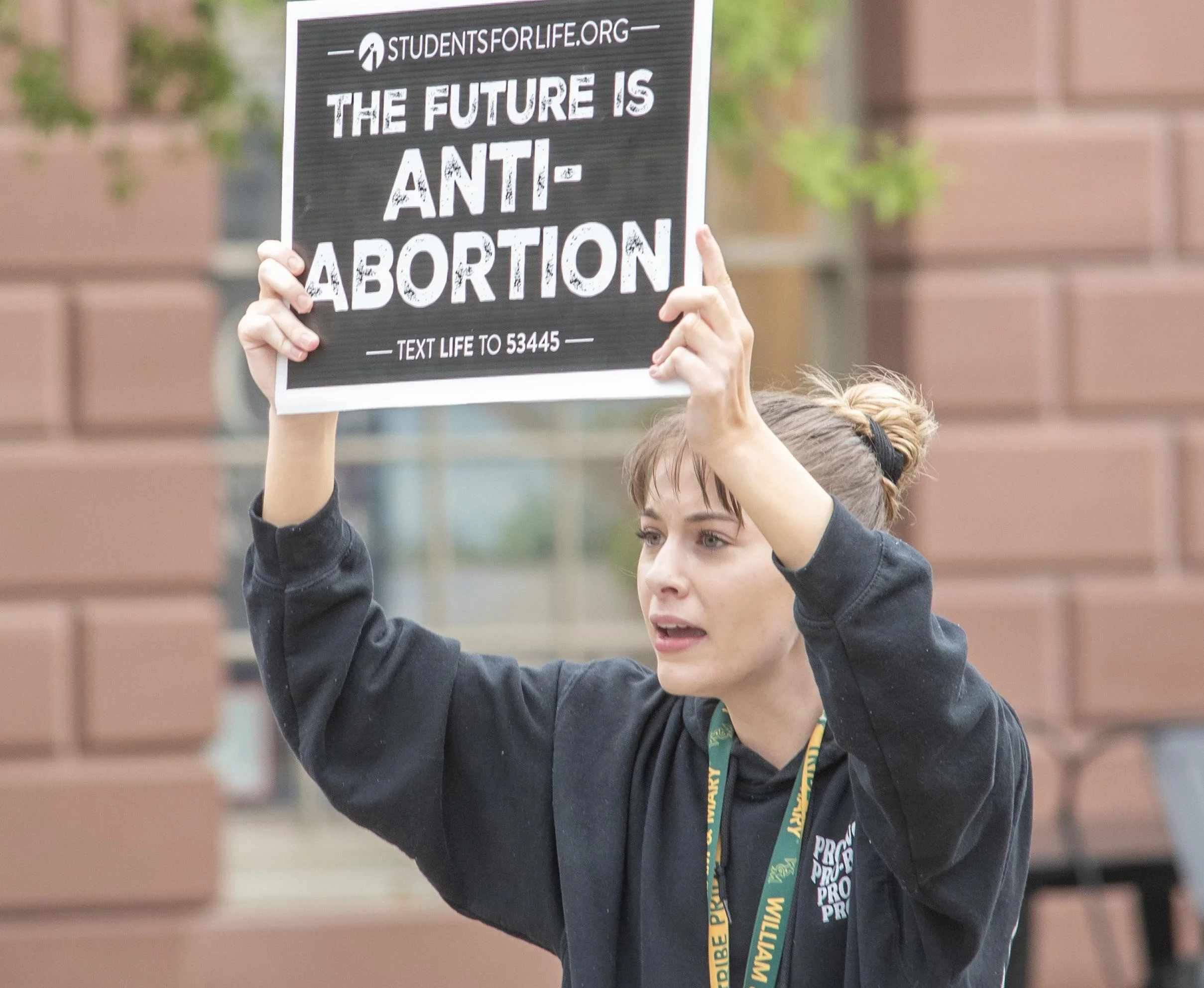
On Oct. 19, TFL hosted politically conservative PragerU influencer Lily Kate to speak on “100 Reasons Why You Shouldn’t Be A Feminist.” Kate expresses her conservative views on Twitter, overtly denounces feminism, and condemns transgender individuals as “appropriating womanhood.”
Comments underneath the announcement for Kate’s speaking engagement on the TFL Instagram account also criticized the organization for inviting an individual whose right-wing ideologies about feminism and abortion were unrepresentative of some of TFL’s audience. Much of the discourse
surrounded Kate’s affiliation with Turning Point USA (TPUSA), a conservative nonprofit organization with sister organizations dedicated to supporting former President Donald Trump and TPUSA Faith, which proclaims itself as “restoring America’s biblical values.” This past May, TFL also reposted a graphic from Live Action comparing abortion to victims of the Holocaust, an argument Live Action has made multiple times on its Instagram page.
In the past few semesters, VOX has not invited directly politically affiliated speakers to campus, with the exception of William & Mary Law School Professor Stacy Kern-Scheerer, who was running for city council at the time. Advertised speakers in the past year have included representatives from Hampton Roads Reproductive Justice League (HRRRJL) and intersex activist Marissa Adams.
When it comes to discussion, Professor McKinney has noticed some concerning trends in the classroom.
“I do find it troubling that anti-abortion students don’t try and engage me when what [we’re] trying to do is create spaces of learning and thinking and reflecting,” McKinney said. “My role is as an instructor and as a scholar. The fact that I am not engaged on these issues seems to be, to me, that we have limited the types of engagement that William & Mary as an intellectual community fosters.”
Brown emphasized the importance of students creating spaces to learn about the histories of the issues they are passionate about in order to become better informed and prepared for interacting with various arguments. “I think that understanding the way that men and women deployed the cultural and intellectual resources available to them in dealing with
historical problems — gender identity, race — enriches our sense of the possibilities in the present,” Brown said. “I understand that there is a very heated [relationship] between VOX and Tribe for Life. I’d like to think [my] students will be better prepared to inform.”
Brown stressed that his class is not designed to be a debate between students but to be about learning the historical basis of the abortion conversation in the United States and studying sources from a critical lens. However, Brown hopes that he is providing students with resources that will equip them with tools both for life and debate.
In terms of the College’s role in this conversation, Brown mentioned that spaces can be created on campuses for free interaction, discourse, and the exchange of ideas.
“Students of good faith will find a way to talk to one another,” Brown said. “Colleges are obligated to provide that space and to protect it. But you can’t compel students to like one another. You can’t compel them to agree with one another. You can’t even compel them to be nice to one another.”
McKinney expressed that a plurality of spaces need to exist for the on-campus conversation regarding abortion, especially in terms of how organizations interact with one another.
Many students, however, do not want to utilize those spaces or interact with groups on opposite ends of the debate.
“For people who are activists, I can understand that you don’t want to spend your time debating people who are not going to be convinced,” McKinney said. “And so I think there’s actually a really necessary space for people who want to
move beyond debate and move to activity. But I think that, when that activism comes to influence spaces of deliberation and contestation and reflection, then we face real problems.”
She also discussed that the College’s environment can, through its nature as a relatively homogenous and insulated institution, exclude voices that are integral to the abortion conversation, including the people who are most directly impacted by abortion legislation and debates.
“I do think we need to move away a little bit from only thinking about people who are activists and thinking about . . . the stories ordinary people who are anti-abortion tell and why. Why are those the stories that work for them?” McKinney said. “Most of the people who have been enrolled [at the College] are not people who have faced issues of unintended pregnancies.”
She noted that when communities do not have spaces for reflection, it can be detrimental, especially for an issue like abortion.
“We don’t have the direct lived experience that could inform the issue in a different way,” McKinney said. “I think anytime we’re having a conversation where people who are the most directly affected are not part of the conversation, I think that should always give us pause.”
Brown said that he finds it difficult to understand spaces where women’s reproductive rights are up for debate, although he encourages historical discussion and free exchanges of ideas.
“I don’t want to live in a nation where women are slaves to their reproductive systems — I just don’t want to, that’s my final observation,” Brown said. “But the truth is I’ll die in this country, and that may well be the case.”
McKinney, whose work primarily focuses on abortion politics, mentioned the influence of morality within the abortion argument.
“In the United States, it’s become so much of a moralized politics,” McKinney said. “Either you’ve taken the correct moral stance on gender freedom, or you’ve taken the correct moral stance on fetal life. That’s the way that we kind of think about it. That shuts down a lot of space for conversation because you can easily box somebody as morally right or morally wrong.”
One of the most beneficial spaces on campus to facilitate conversations about abortion are in classroom settings, although oftentimes, many students are not willing to speak up.
“My hope is that we can have more productive discussions on campus, and that our relatively minor flare-ups of tactical disagreements doesn’t overshadow the fact that there are and there can be really important conversations,” McKinney said.
“[I hope] that we remember that we’re dealing with people who have differing opinions; we still need to make community together, even though this is an incredibly important issue with incredibly high stakes. It’s a contradiction that’s really, really hard to navigate. But I appreciate all the people on campus who are trying to navigate it.”


I went on a so you don’t have to
Have you ever seen a ghost tour on campus or around Colonial Williamsburg at night? Are you curious what it’s like but don’t have room in your budget after your latest Wawa run? Join your Flat Hat Magazine ghost tour guide, JR Herman ‘24, as she tells all.


This spooky season, I sampled both Colonial Williamsburg’s Haunted Williamsburg Tour and the Colonial Ghosts’ Haunted Tour (Extended Version) to bring you a best-hits list of the Burg’s ghost stories. I report to you what our guides told us,
making no attempt to confirm or reject the sincerity of any account, historical or modern. My goal, after all, is simply to give you a ghost tour experience on the cheap.
OK everyone, here’s a lantern. Try not to step in any horse poop along the way. You do want an authentic experience, right?
Let’s get started!
First up on my best-hits tour is the Wythe House, home of George Wythe, Declaration of Independence signer, Founding Father, Continental Congress and
“First up on my best-hits tour is the Wythe House, home of George Wythe, Declaration of Independence signer, Founding Father, Continental Congress and Constitution Convention Representative, America’s first law professor, mentor of Thomas Jefferson — we get it, he had a great résumé. The most famous legend associated with his house is that of Lady Anne Skipwith, a guest of George Wythe.”
Constitution Convention Representative, America’s first law professor, mentor of Thomas Jefferson — we get it, he had a great résumé. The most famous legend associated with his house is that of Lady Anne Skipwith, a guest of George Wythe. According to legend, Lady Anne accompanied her husband to a ball at the Governor’s Palace where she discovered that he was having an affair with her sister — yikes. She left the party in tears, losing one of her red high heels as she fled the Palace. No, she didn’t break her neck walking up the Wythe House stairs with only one heel (impressive given my own near-death experiences in flats on the uneven Wren Building stairs, but I digress). A few days later though, Lady Anne committed suicide, and her tormented ghost still wanders up and down the stairs with only one heel.
Is this true? Absolutely not, according to the guide of the official Colonial Williamsburg ghost tour who explained that “outside tours” often tell the tale, despite its ahistorical basis. While Lady Anne and her husband did stay at the Wythe House, she neither died there nor killed herself. In reality, she died in childbirth.
In fact, the only deaths known to have occurred in the Wythe House were those from old age, which would perhaps suggest a lack of lingering spirits — accounts of spirits are typically associated with sudden, tragic deaths and lives cut short. With that caveat, the Wythe House is still said to be home to a ghost. Reenactors in the house have reported looking into a
mirror on the first floor and seeing a beautiful woman in a blue satin gown standing beside them. When the employee turns around, the woman, of course, has vanished without a trace. This occurs so frequently that when a concerned new employee told a co-worker what she had witnessed, the co-worker replied, “Oh yeah, that happens all the time.” Colonial Williamsburg employees alone in the building have also reported items in their bags being taken out, placed in piles on different chairs, and aesthetically arranged, prompting speculation that this odd yet semi-frequent happening may be the work of the ghost of George Wythe’s wife, Elizabeth, who was known for excessive arranging, organizing, and lining up of household objects (tendencies which today would likely be recognized as symptoms of Obsessive Compulsive Disorder).
“During renovations in the 1930s, 158 skeletons were found here. 156 of these skeletons belonged to soldiers who had fought at the Siege of Yorktown and who were recovering from their wounds at the Palace and who were recovering from their wounds at the Palace (which had been converted into a makeshift hospital) when the building tragically burned down, killing these wounded soldiers along with two nurses.”
Recently, Colonial Williamsburg employees arrived an hour early to unlock the house in preparation for the night’s tour. After the first employee failed to open the house with the key, a second employee tried. Both times, the key turned, but the door wouldn’t open. The employees called security, but to no avail — their master key similarly failed to unlock the door. Security then tried to unlock the basement entrance, but it wouldn’t budge either. With only 20 minutes until the tour, the Colonial Williamsburg Operations team arrived, entering the house through a window SWATteam-style to open the front door from the inside. As they entered the house, they realized that all of the doors had been locked via thumb turn, the 18th-century version of a deadbolt. In other words, every door had been locked from the inside. Security, fearing a potential intruder, checked the house and reviewed the video footage, but there was no indication that anyone had been in the house. Spooky. The mystery of who (or what) locked these thumb turns remains unsolved, but employees once again suspect Elizabeth Wythe, known for her perfectionism. After all, she hadn’t missed a single thumb turn.
Next up is the Peyton Randolph House on Nicholson Street, considered so haunted that some Colonial Williamsburg employees refuse to be alone in the house at night. With 37 unexpected, tragic, and often violent deaths, some consider it the most haunted building in America. Years ago, a newly hired security guard conducted a check of the house at night and failed to respond to the dispatcher for nearly half an hour, prompting the sergeant and lieutenant to enter the building. As they descended the stairs to the basement, they saw light streaming through the bottom of the door. The door, however, wouldn’t open. Maybe the security guard accidentally locked himself in? The problem, though, is that the basement door can only be locked from the outside. They banged on the door for about 20 seconds, and then all of a sudden, the door swung open by itself … and the Sergeant and Lieutenant saw the security guard sitting on the steps with one hand on his radio and the other on his gun. Frazzled and grateful that assistance had arrived, he reported that something had forcefully grabbed him and prevented him from moving. Guards aren’t paid bonuses for boos, and unsurprisingly, he quit two weeks later.
Reported hauntings of the Randolph House go at least as far back as 1824, when the Marquis de Lafayette, a French general during the American Revolution, visited the house and claimed that a cold hand gripped his shoulder in the dead of night. Other visitors to the house have reported hearing mysterious voices, and one ghost tour guest reported seeing candle flames reacting to the tour guide’s voice. Others claim to have heard knocking sounds, moans, giggles, and moving furniture — or was that a description of a frat party?
Make sure to pay attention to where you’re walking because the horses are quite active along this road. OK, here we are; welcome to the Governor’s Palace, one of Colonial Williamsburg’s top photo destinations … and also an ex-mass grave. During renovations in the 1930s, 158 skeletons were found here. 156 of these skeletons belonged to soldiers who had fought at the Siege of Yorktown and were recovering from their wounds at the Palace (which had been converted into a makeshift hospital) when the building tragically burned down, killing these wounded soldiers along with two nurses. About a decade ago, Colonial Williamsburg offered a special tour of the Palace to honor these unknown soldiers. Our guide recalled he had given the tour for three years with no incident, but one night — on Veterans’ Day — he and a fellow employee were locking the building after the last tour and heard a voice saying “Thank you.” It has since happened 50 or 60 times, but only when these two veterans lock up the building.
As we leave Colonial Williamsburg and approach campus (conjure up an image of a touristy group with lanterns awkwardly crossing Confusion Corner), we’ll be looking at Ancient Campus: the Wren Building, the Brafferton, and the President’s House. The Wren Building was converted into a hospital for wounded French soldiers during the Revolutionary War, and the ghosts of those who died from wounds are said to roam the building at night. Some passersby hear footsteps while others claim to have seen ghostly figures in uniform wandering the hallways. Of course, there are also several stories involving drunk frat boys and the crypt (an “only at William & Mary” moment), but you’ve probably already heard those…
Up until the onset of the Revolutionary War, the Brafferton served as a Crown-supported indoctrination program, the goal of which was to Christianize young Native American boys and immerse them in British culture in the hopes that they (and their tribes) would become British allies. The students in the Brafferton (many of whom had been kidnapped) suffered greatly from loneliness, homesickness, and disease. One of the boys took comfort in running and every night would escape from the building, run, and return by the next morning. One night, however, the boy never returned. According to legend, his body was found the next day, killed either by a colonist or a jealous student. Over the years, students walking by the building at night have reported hearing a child’s faint laughter. Others have claimed to have felt someone run past them only to see no one there, or instead, to have witnessed a ghostly figure running up and down the Sunken Gardens. Screams near the Sunken Gardens have also been linked to this legend, but as the tour guide (a student of the College) admitted, those were probably just the screams of students streaking the “Sunky G” as part of the Triathlon.
For years, a closet door on the second floor of the President’s House refused to close. Similar occurrences in GGV are blamed on cockroach conventions, but in the case of the President’s House, everyone just blamed it on the building’s age. When the house was being renovated, contractors discovered the skeleton of a young girl inside the upper-story wall. They say that after her bones were properly laid to rest, the closet door closed without a hitch. Hope you enjoyed this best-hits list of our haunted little town’s ghost stories! BOO!




Food is a critical aspect of the human body — and so is the digestive system. When uncontrollable forces put a target on the back of your own cells, things can get pretty messy...
Sophia Petrillo, arguably the main character of The Golden Girls, once said the closest she felt to God was after eating Mexican food, broccoli, or deli meats ... and the list goes on.
She and I have quite a few things in common, the only difference being that she is sixty years my senior. Why, you may ask, do I have the gastrointestinal tract of someone with an AARP membership?
Simple. I have the “Pete Disease,” less commonly known as Crohn’s.
I’ve endured three years of uncomfortable, awkward trips to the public restrooms praying no one walks in as a demon exorcizes itself from my colon, bellowing and belching its foul substance into the porcelain bowl below. The sweaty palms, gut-wrenching (literally) pain, and exponentially decreasing shame in shitting two inches away from a fellow peer were all symptoms I could live with — until recently. More frequent pain, sudden weight loss, and overall poor quality of life landed me a flight home to see the GI doc. It gets worse. To get a diagnosis, I had to go through a harrowing experience: I was to be wheeled into a cold room, naked and afraid. Then, a long tube was to be shoved up my butt all the way until it reached the junction of my small intestine (aka. six fucking feet into my body). But even before that, I had to prep by fasting and consuming nothing but clear liquid and laxatives.


As I was walking down the hallway, clenching my little IV pole, I contemplated that I may have easily been the youngest person alive to get a colonoscopy. Let’s just say the “in” crowd at the GI outpatient medical center was closer to becoming dust than celebrating their 21st.
A few biopsies later, I was told I have Crohn’s Disease, an autoimmune disorder that causes inflammation in your colon and small intestine because your cells attack themselves. Great. My body hates itself. Another fun topic to
unpack with my therapist, I guess. I’m now reliant on little battery-acid-tasting pills to provide me with the ability to eat all the mouth-watering morsels I desire, and let me tell you, it is so worth it.
No longer am I afraid after shoveling heaping spoonfuls of refried beans, oozing cheese, and fresh jalapenos into my mouth, after which I will be forced to kindly smile at the waiter, ask where the bathroom is, calmly excuse myself while clumsily lurching out of the booth, thighs sticking and squeaking across the seat, discreetly speed walk while deep breathing and counting to 10, knock ferociously on the single stall door, quietly will myself to die when someone responds, cross my legs and squeeze my cheeks together so hard I could procure a diamond, rock back and forth, and finally dash in and lock the door as the old woman exits with a quizzical stare as I hasten to create a paper nest and then ...
Yeah, so the pills are great despite there being no cure.
The hardest part of this whole experience? The months leading up to my diagnosis where I had to cut out all foods that were not easily digested (aka everything but rice and lean proteins). I’m now grateful for being able to embrace flavors and foods that I couldn’t before.
Ultimately, what I have learned is that life is short, people! Enjoy food when you can! Calories were a ‘90s invention to capitalize off of people’s insecurities and desire to fit in. Of course, eating healthy (as in lots of fresh produce) is important, but I think what’s more important is to live life to the fullest, and for me, that means not focusing on my body image or whether food is “good” or “bad.”
There are so many more things to think about: hearing my friends laugh and converse when we have dinners together, enjoying flavor pairings, learning how to cook to minimize my Crohn’s symptoms, and being able to eat anything when I travel because I do not have to “earn” my food.
Picture this: Williamsburg 2022. I am microwaving my Trader Joe’s pot pie and digging in knowing there will be no need for a planned emergency bathroom escape route. I just sit back, relax, and enjoy this movement in a new era of relishing non-dining hall meals.

Insomnia Cookies and Cookie Chris both opened in Williamsburg in the summer of 2022, giving College of William and Mary students a very difficult but very tasty question: where should they buy their cookies?
For too long, students of the College have been deprived of tasty cookies to snack on during long study sessions. Many changes came to Williamsburg in recent months, including the arrival of Cookie Chris and Insomnia Cookies, both of which opened just miles from one another. With two cookie shops in such close proximity, the debate quickly arises: which cook ie shop should be your go-to, and which should be left in the dust?
If you’re one of the students seeking an answer
to this question, then look no further — my room mate and I sacrificed $50 to answer this question for you.
To make this information a bit easier to swallow, I will assign each store an overall score and award a special mention to one outstanding cookie from each establishment. After that, it’s up to you to decide where your loyalties lie.
We tasted eight cookies at Insomnia Cookies and six at Cookie Chris.
First up: Insomnia Cookies.
As tradition dictates, we entered Insomnia Cook ies after nightfall, carefully perusing the selection offered. For just under $24, we left the store with four “simple” cookies and four “deluxe” cookies.
We first sampled the classics:
Chocolate chip: 8/10
A standard chocolate chip cookie. Good distri bution of chocolate chips, but we did dock some points because it lacked the freshness that gives chocolate chip cookies their appeal. Not much more to say.
As far as sugar cookies are concerned, we agreed that there are much better options out there. The top was very crunchy, which was nice, but it was very buttery. Insomnia Cookies, you may need to modify the recipe on this one.
Oatmeal raisin: 5/10
A middle-of-the-road cookie — after much rumi
nation, my roommate concluded, “I think I could make better ones.” It was a bit stale, but it was a well-spiced cookie. Overall, there was nothing too special about this cookie.
Snickerdoodle: 8/10
I would like to share my initial reaction to Insom nia’s signature cookie: “See, I feel like ... they did the sugar cookie, and they were like ‘this isn’t good enough,’ so they had to make one that was like the sugar cookie, but not.” I stand by this response.
Now for the review that you’ve all been waiting for — our favorite. Our favorite cookie from Insomnia Cookies was the Deluxe Salted Caramel. Here is an exclusive look at our first reactions to the only 10/10 score that we gave Insomnia Cookies:
As we bit into the cookie for the first time, we were left speechless.
“Mm. No, that’s good. It’s got good crunch,” my
roommate said, gazing at the cookie.
“They did good on this one.”
“They popped off…woah. The second bite.”
I was in awe. This was everything I’d ever wanted in a cookie. The caramel was perfectly melted, and
the cookie itself was soft on the inside but firm on the outside. It was truly deserving of a perfect score.
After averaging all of the scores for the eight cookies we tried, the final verdict for Insomnia Cookies: 6.8/10.
To keep things consistent, I will go over four cook ies from Cookie Chris comparable to the ones I rated above:
Chocolate chip: 8.5/10
It was very gooey — we gave it 0.5 more points than Insomnia Cookies’ counterpart because of its freshness and consistency.
“Again, it’s a chocolate chip cookie,” I concluded.
Peanut butter: 6/10
The peanut butter was not overpowering, and we preferred it to the Reese’s cookie that we tried at Insomnia Cookies. They used peanut butter chips as opposed to just adding peanut butter to the dough, which was a fun change from your run-ofthe-mill peanut butter cookie.

Frosted oatmeal: 4/10
“I like it when they have raisins in them; I like the frosting, nice touch ... but I don’t know why they took away the raisins,” I described. As you can probably tell, this cookie was a bit disappointing. It felt like a big, freshly baked Frosted Flake.
Cinnamon roll: 7/10
“It does taste like a homemade cinnamon roll,” my roommate observed. This cookie also had a nice consistency, and it made that nice flaky sound when you broke it. It really exceeded our expecta tions.
Finally, we come to our second 10/10 of all 14 cookies: the double chocolate chip.
“Straight up, it’s like a brownie ... but a cookie,” my roommate observed.
“It’s like a brownie, but if the top was crunchy. Most brownies I feel like you don’t get that. You have the thinnest layer of, like … ”
“Flake.”
“Flake. There’s crunch, but then goo.”
“This is delicious.”
“This is so good.”
For any chocolate lovers out there, I would one hundred percent recommend this cookie. It was chocolate on steroids. It was an enlightened brownie. It was truly something special.
After spending $30 (wowza) on these six cookies, the average score for Cookie Chris comes out to 7.25/10.
I would also like to give Cookie Chris some credit for their atmosphere and overall cookie experi ence — the store itself had a lovely aesthetic, and the employees were enthusiastic and helpful as we made our decisions. Immediately after we entered their store, one employee confirmed that it was our first time in their store and walked us through the weekly flavors. It was clear that they give each of their customers special care, so I will give Cook ie Chris one extra point for the overall quality of our experience. This brings the Cookie Chris score up to 8.25/10.
There you have it. Two cookie shops. Fourteen cookies. One winner.
Congratulations, Cookie Chris — we hope you’re ready to bear the responsibility of 8,000 hungry college students showing up at your doors during finals week.

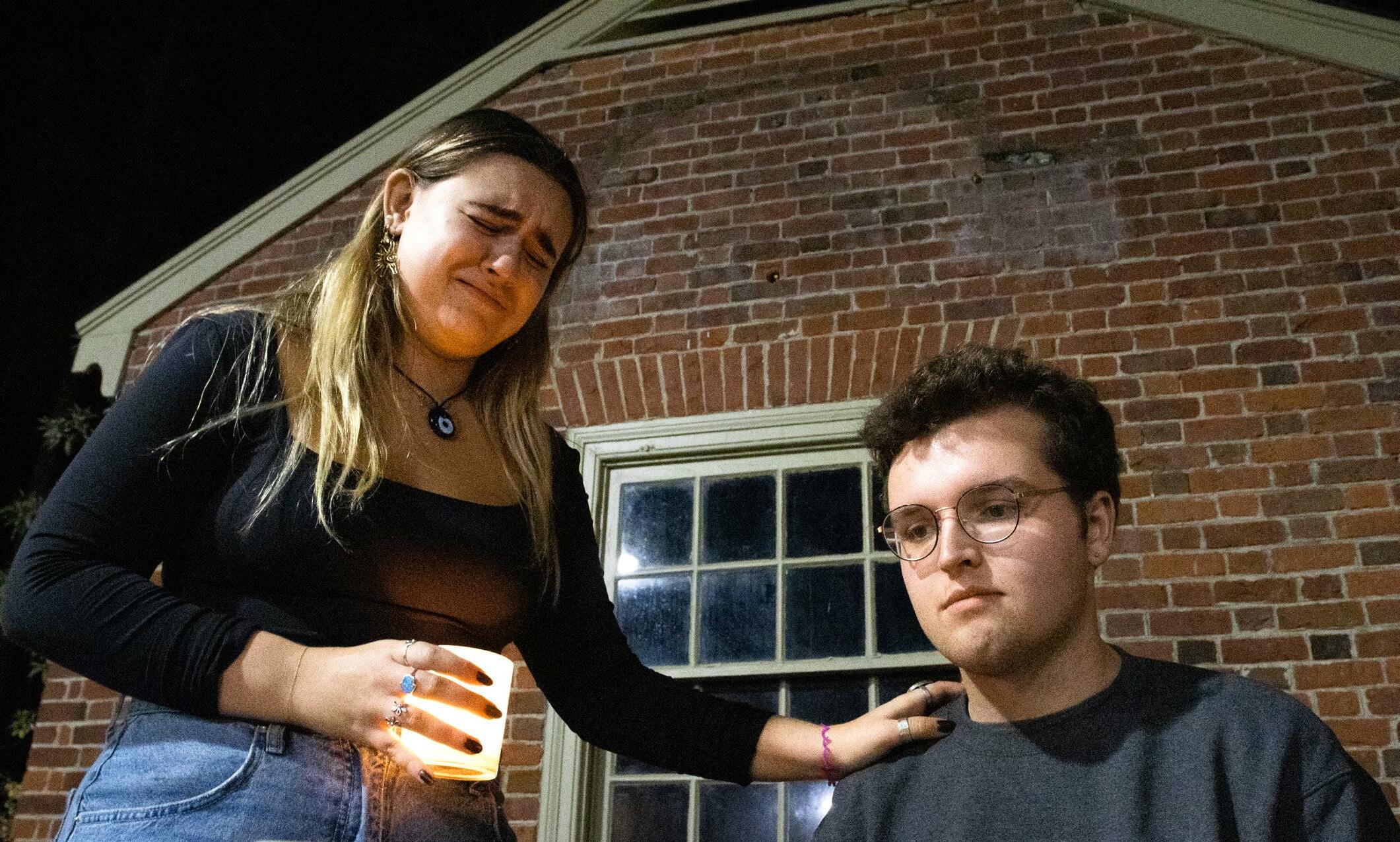

The recent losses
Martyrs and the last bastions of a better era — both titles befitting of the three of you.
Even these words somehow seem insufficient to describe the way you touched my life and the lives of so many others. You left this world before your time, providing a kind of joy that I have not experienced since your early departure. Now, all I feel is an emptiness that no amount of shitty Sadler food will ever be able to fill.
The halls of this place you once called home feel different now. Although looming melancholy fills the void where you once stood, your memory remains with all of those fortunate enough to have crossed your paths.
Qdoba, your hours were unmatched — at least by the standards set by the rest of the establishments at this school. I vividly remember our first encounter and all the late nights we shared. I wish I’d known then how short our time together would be. The sheer quantity of food one could get for their money was simply incredible — the burrito, chips, and queso were more than any human should ever eat in a single meal. It was perfect. Whether cramming for an exam or watching a movie with friends late at night, you were always there for us. Doordashing Chipotle simply cannot compare (not to mention the amount of hurt Chipotle has been inflicting on my poor, poor wallet this semester).
Cosi, you most certainly were not known for your thriftiness, but the exorbitant prices at Lodge 1 frankly disgrace your memory. When I sought shelter from the cold last winter, you were always my first choice. Your food was not only warm but also heated on something other than a heat lamp, surpassing all standards set by this institution. Your soups, especially the tomato basil, were a favorite of mine, and I’m sure of many others.
Daily Grind, there are some people and places that just make you feel warm. Not warm in a physical sense, but more so in a feeling of unmatched comfort — I cannot think of a better way to describe how you made people feel. Despite your unusually high volume of customers, your presence was a calming one. You were the perfect place to study or meet with a group of friends; I spent
many a Sunday morning doing just that. The movement of your operations to Lodge 1 was insulting, to say the least. The coffee was never what made you special: it was merely a facet of your greatness. If one were to close their eyes and imagine the perfect college coffee shop, you were it. Swemromas is great, but it just isn’t the same. The ambiance isn’t there, at least not anywhere near the same degree. There is no other place on campus that can replace you.
The loss of the three of you, combined with the unexplained absence of the Tribe Truck, has left a massive hole in the fabric of the College community. (My working theory is that the Tribe Truck is unable to return until it has had a chance to finish grieving). Yes, they granted us more dining dollars, acting as if it was a gift from above, but now we don’t have anywhere to go with our newfound “wealth.” Without you, Cosi and Qdoba in particular, the conversation about what vegan and vegetarian students are supposed to be eating on this campus has somehow become even more awkward than it already was.
The weight of your loss is hard to describe in words, but I have done my best.
Just know that we, the students of the College of William and Mary, will always remember and cherish the time we had together.

of key members of our community have impacted us all. Let us reflect upon and remember the ways that they changed our lives for the better.
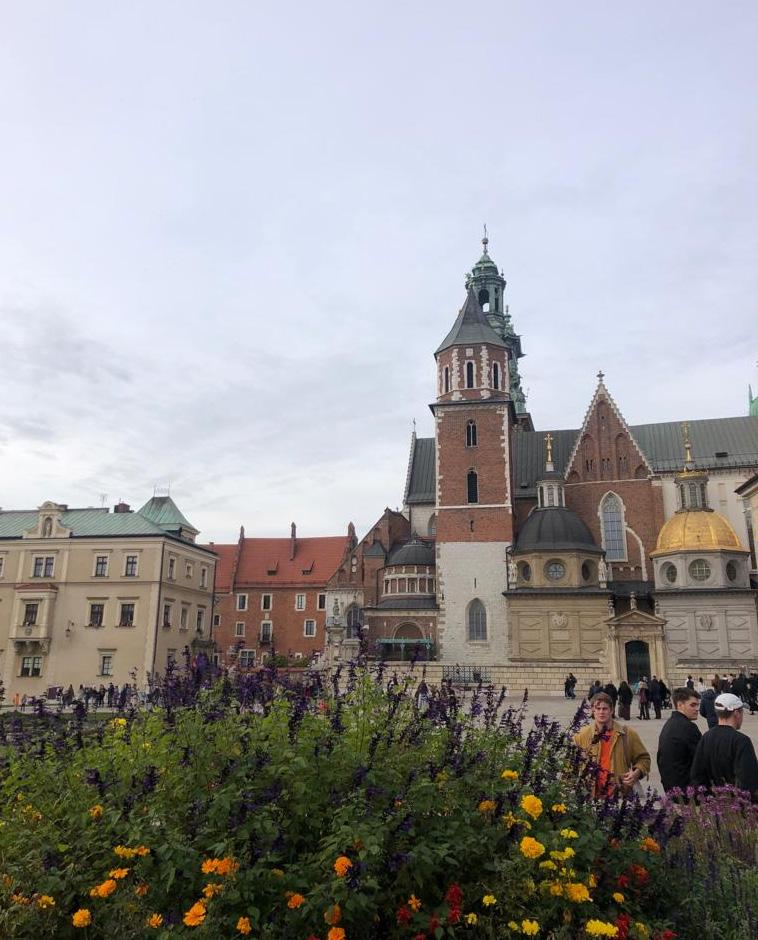
Sir Isaac Newton popularized the phrase “standing on the shoulders of giants,” attributing his accomplishments to the intellectual foundations laid by scientists who came before him. I am no scientist, and I did not come to Poland to study natural science, yet Newton’s phrase has sprung to mind every day I have spent here.

Ichose to study in Poland because I am ethnically Polish. My paternal grandparents were from Poland, and though I grew up completely Americanized, I remember Polish traditions on Easter and Christmas Eve. I remember my babcia’s (grandmother’s) homemade Polish food and the stories my father told me about my grandparents, describing the unimaginable hardships they endured before, during, and after the Second World War. I continue to think of my grandparents as the strongest and toughest people I have ever known, even though neither of them was much above five feet tall — they were giants in every meaningful sense of the word. As a history major studying at the Jagiellonian University of Kraków, I have found that the theme of this “race of giants,” of these “mighty men of old, men of renown” dominates the history of this place, which historian Norman Davies aptly titled “God’s Playground.” The national symbol of Poland is the “Biały Orel” (White Eagle), a strong and noble animal; yet the phoenix, the fantastical bird that continually dies and rises again from the ashes, would be just as appropriate.
Yesterday, I went to Wawel Castle, where haughty Polish kings (when Poland was a kingdom with Kraków her capital) ruled from atop a hill overlooking the city. There, at Wawel Cathedral, I saw some of the finest Renaissance architecture in the world. I saw outrageous displays of material wealth and military trophies, and I gazed over a beautiful city that survived thanks only to the labors of Poles over the past millennium, all while comfortably drinking
hot chocolate and eating sernik (cheesecake). I was standing on the shoulders of giants yet again. This grand display left to Polish posterity was a result of the Polish-Lithuanian Commonwealth, then the major power in Central and Eastern Europe — the Polish “Golden Age.” From Wawel, once the seat of an empire stretching from the Baltic to the Black seas, I could see, somberly standing, Kopiec Kósciuszki (Kósciuszko’s Mound), named for the Polish hero who helped secure independence for America but who was unable to do the same for his own country, which had been annexed by the Russian Empire. From 1795 to 1918, Poles withstood over a century of attempts to eliminate their culture. The ashes of the phoenix come to mind. That mound best illustrates the pall of sadness that hangs over this country, reminding today’s Poles that their prosperity is a historical anomaly, merely a winning lottery ticket bought by previous generations but only now able to be redeemed.
Last weekend, I went to Warsaw. Standing under the massive Palace of Culture and Science “gifted” to Poland by her “liberator” Joseph Stalin, I couldn’t help but wonder what my grandparents — who were born in Poland between the World Wars and died in the U.S. over a decade ago — would think of a Kula in the capital. In a Polish history course, a professor referred to the interwar period as a time of immense optimism, a phoenix rising from the ashes. But Poland disappeared yet again in 1939 after the Nazis and Communists jointly invaded, triggering the Second World War. Back to ashes.


In Warsaw, I visited a museum dedicated to the 1944 Warsaw Uprising — when Poles attempted to gain independence from German occupation before the Soviets could “liberate” Poland. If you know me, you know that “emotional” is not a word used to describe me, and yet, I scarcely held back tears in that museum. There I saw armbands that the Germans made Polish forced laborers wear when they were taken to Germany; my grandfather, the sweetest and most gentle man I ever met, likely had to wear one. I wandered into an exhibition entitled “the Little Insurgent,” where I saw a plaque commemorating a Polish corporal who earned a medal for bravery in the Uprising and later died in battle. He was eleven years old. I saw a photo of smiling resistance fighters, none of whom would have looked out of place playing frisbee on the Sunken Garden. They, too, died in battle.
There are still bullet holes in many buildings in Warsaw.
I started a Polish language course this week. Everyone in the course introduced themselves, and most of my classmates are Ukrainian. I assumed they were high schoolers and was surprised to hear they were 17 and 18, freshmen at the university. In many ways, the boys reminded me of myself at age 15, caught in the transition from boy to man. Another American asked them if they would get drafted if they went back home. A pubescent student looked up, only briefly making eye contact, “Probably not,” he said, before looking back down at the ground. “They’re not drafting university students right now.”

His friend with an equally puerile face chimed in, “But because we are 18 year-old males, if we went home, then we would not be allowed to leave, by law.” I have my own draft card, of course, but hearing a young man who looked like he still had not yet had his first shave say that he would probably not get drafted if he went home is much, much harder to stomach than looking at my own government-issued blank check to the god of war. I had never felt so old and sad.
And so, writing this from Poland, I can see that I stand on the shoulders of giants. I walk in a country that owes its independence to the millions who came before, who planted trees under whose shade they would never sit. I only exist because of my grandparents who suffered the triple cruelties of poverty and two foreign occupations before emigrating across the world to build a better life for their descendants. I am one of those descendants, and I do have a better life than they had. If they were still alive, I would fear standing next to them, as I would seem an incomparably small man.
I embarked on a solo travel venture to Italy in late August of 2022, visiting four cities in ten days.

01----
I’d like to take you through my experiences with the social side of traveling alone, specifically, sleeping in rooms with 6+ strangers.
with strangers: thousands of miles from home----- - - - - - - - -
Traveling solo initially caused a bit of anxiety for me, but conquering these fears provided substantial benefits.
- - - - - - - - - - - -
There’s one simple fact about myself: I am not the best at small talk. For most of my early childhood, it served as a source of anxiety, a tool I could never quite grasp. Using lines such as “How are you?” or “Where are you from?” always seemed to fall flat, and the conversation quickly fizzled out. However, there are times when these basic questions come in handy, like college orientation or a simple grocery store interaction. Since college, small talk has become much more prevalent in my life, and I have pushed myself to engage in it more frequently. The most recent test of this skill has been my solo travels in Italy, especially when staying in hostels. Documenting my travels has always been a focus of mine, and I enjoy taking photos and keeping a journal of every step I take along the way.
My first stop was Venice — the site of my first hostel experience. To preface, I was fairly nervous and almost considered booking an Airbnb instead. I read stories online of people snoring for hours, having intimate relations in shared bathrooms, and stealing fellow travelers’ belongings in the dead of night. Despite these warnings, I decided to give it a try, and, thankfully, none of these concerns manifested. The worst I encountered was the occasional traveler who wasn’t interested in socializing or left belongings cluttered on the floor. Most everyone was more than willing to talk, and almost everyone spoke English, easing another of my worries: the language barrier. This became apparent when I talked to my bunkmate for the first time, who recommended I dance away the jetlag at the party downstairs. I took her advice and grabbed a free drink from the bar.
I almost called it a failure until another guy my age walked toward my table, looking as lost as I was. We started with a bit of typical small talk of “Where are you from?” and “Where are you traveling?” Through these seemingly simple questions, I learned a lot about his life. He was traveling from Scotland before his last year at university. A German guy joined our table, and we spent the evening discussing our countries’ cultural differences while enjoying Italian liquor.
After enjoying my first night in Venice, I quickly hopped to the nearest large city, Milan, where my
hostel had a more rustic, communal vibe. Even though I never got that close to my dorm mates, talking to them at the end of the day was always a delight. Two of the girls had thick Dutch accents and were constantly talking about how much they wanted to visit the U.S. The other two guys were from New Jersey and were spending the next few months backpacking along the Mediterranean coast. Even though I never partied or traveled with this group, I coincidentally saw one of the girls while on a day trip to Lake Como, which was pretty surreal. I had spent the day by myself, taking trains up and down the lake, and we happened to be waiting for the same returning train to Milan at the end of the day. At that moment, the world felt so small, yet huge, at the same time.
I trekked further to Florence, where I decided to take a break from hostels and stayed in an Airbnb by myself. I spent a day or two seeing the typical sights: cathedrals, museums, gardens. As soon as I reached the statue of David, I received a message from the German boy from the Venice hostel, who excitedly said that he was also in Florence, and we planned to get food at a local market. We spent the afternoon together, bought a couple of bottles of wine, and climbed to the top of Piazzale Michelangelo to watch the sunset. We hiked for almost an hour, talking about life and enjoying the pleasures of drinking in public. We reached the top of the plaza and found about 200 others enjoying the sunset, Florentines and tourists alike.
My last night in Italy was my favorite. I traveled back to Venice and stayed at the same hostel, determined to make one last memory. I was unsuccessful for a while — nobody had checked into the 9-person room. Eventually, my bunkmate arrived, and I struck up a conversation while she was getting settled. Turns out we had more in common than anyone else I had met during my travels. She was from a small town in South Dakota, recently graduated, and had been traveling the world since January. We bonded over the small-town life and met another boy from Toronto, who was traveling before entering his freshman year of university. The three of us returned to the same hostel bar and met a group of five German students, and we spent the next three hours playing card games in the community
park, drinking at local bars, and enjoying the company of strangers. We exchanged contact information and still keep in contact to this day.
I realize this is a long narrative about random people that you will never know and never experience in the same way that I have, but what I want to show is that there are so many fascinating people out there. You don’t need a solidified reason to be together. Use the typical small talk conversation starters that you learned in grade school. Nobody will judge you — everyone is in the exact same situation. People just want to explore the world, meet new people, and experience new cultures.
Even though the same icebreaker questions get boring after a while, they’re important and set the stage for companionship abroad. Some of these may be short-lasting or permanent friendships, but even if you never see them again, you will forever have stories to tell, even if it’s just grabbing dinner on a random Wednesday night in Italy. Try not to be afraid of the small talk and the newness of it all. Take that leap and meet a random German guy in Italy who knows about a great viewing spot for a sunset.











Artists of all domains have eagerly anticipated the completion of the Arts Quarter, a multi-phased construction project by the College of William and Mary. Join Rebecca Altman ‘25 as she describes the numerous benefits that the Arts Quarter will bring to musicians as well as the current infrastructure issues that students face.
Every Monday and Wednesday from 4:00 to 5:50 p.m., the College of William & Mary Wind Ensemble rehearses in Room 207 of Ewell Hall. At this point in my college career, I know that room like the back of my hand. Consequently, I am keenly aware that the space we have is too small, especially for the percussion section. With an assortment of mallet instruments, five timpani, randomly scattered stands, and other fragile items, moving around is quite difficult. As a result, we play in an incredibly cramped environment, often blocking one another from seeing the conductor.
Traveling to George Mason University last February was remarkable, particularly their musical infrastructure. Their rehearsal space had acoustics that allowed us to hear all 50
musicians infinitely better, not to mention the flexibility the percussionists had in terms of setting up our instruments. And that was only their rehearsal venue — we didn’t get to see their performance hall, but I’m sure it far surpassed the capabilities of Commonwealth Auditorium.
As a student and musician at the College, it is embarrassing to have such a lack of quality rehearsal and performance spaces. And we can thank the prolonged construction of the fabled Arts Quarter for not meeting the fundamental requests of musicians.
For context, Phi Beta Kappa Memorial Hall was the predominant performance venue for artistic organizations across campus. An older version of the building burned down in 1953 and was replaced with what is now Ewell Hall. The College constructed PBK in the mid-1950s as the first building for New Campus. It housed the largest auditorium on campus as well as the third 1976 presidential debate. But age finally caught up to PBK, and demolition began in 2019. This paved the way for a three-phased Arts Quarter: a new music building; improved spaces for the theater, speech, and dance department; and an expansion of Andrews Hall for art and art history.

However, the journey to completion has not been easy. Issues with funding from the Virginia General Assembly in 2019, coupled with the switching of contractors to account for said funds, delayed the demolition of the aging PBK, and, thus, the construction of the Arts Quarter. Statements from the College originally indicated that the completion dates for PBK and the music building were scheduled for 2021. Now, the College’s website indicates November 2022 while their Instagram indicates that the buildings will be open for academic use in the fall of 2023. Progress — and good progress at that — has certainly been made, but there is a great lag between the plan and the implementation.
Believe me, I hate seeing cranes and construction pits as much as the next person. Anyone involved with the aforementioned departments or student-led dance and theater troupes would echo these construction complaints. But the venues that will take the pit’s place provide me with much hope. For years, students have been told on walking tours of campus that they will get the opportunity to perform in a premiere venue. Soon, tour guides will finally be able to say that with honesty.
Furthermore, as someone who rehearses in Ewell Hall four times a week at a minimum, it’s not a fun place. For starters, what many perceive as the entrance to the building — the doors facing the Sunken Garden — is actually the doors to office spaces; the predominant entrance is off to the side, which is utterly confusing. Inside, some rooms are sealed off because of asbestos, and the entire building has an aura of griminess. I once walked out of a first-floor practice room to see a five-foot-long trail of ants gliding up the wall. There also aren’t any truly sound-proofed practice rooms, which can
create awkward and distracting experiences. When practicing a delicate choral piece for my a cappella group, someone began to cover “Just Like Heaven” by The Cure on a neighboring drum kit. While it’s an excellent song, it has absolutely no relation to a slow Spanish song about undying love.
People have also claimed that Ewell is haunted — I have no proof to confirm or deny this claim, but I would not be entirely surprised if this theory were true.
This is all to say that consistently working in spaces not designed to give musicians the full idea of what their work sounds like can be dispiriting. Asking our family and friends to go to Kaplan Arena and watch the Wind Ensemble, Symphony Orchestra, and all three choirs during Family Weekend genuinely made me upset. Gustav Holst and Eric Whitacre would be disappointed by our lack of meaningful structures to rehearse and perform their works.
I personally knew that I was going to participate in music organizations when I attended the College, no matter the buildings I would endure, but not everyone is similarly wired. Having better spaces for musicians to explore their creativity could encourage prospective students to gravitate towards Williamsburg and thus create a more passionate and engaged music scene among the student body. There are few things I love more than going on orchestral music deep-dives with my roommate or impromptu run-throughs of repertoire with my a cappella group in the middle of a function. To be able to share that with each other and to pass that enthusiasm through the College community is invaluable. I would hate to see our physical spaces deflate this energy, either now or in the future.
Those who hadn’t known my feelings on the construction before have posed — unprompted — the question of why we need a new music building. Construction distorts the picturesque image of our colonial campus, and this particular project has been ongoing for the entirety of our college careers. So, why should we even care?
The best answer I can provide is this: the prolonged artistic creativity of the College’s student body depends on it.
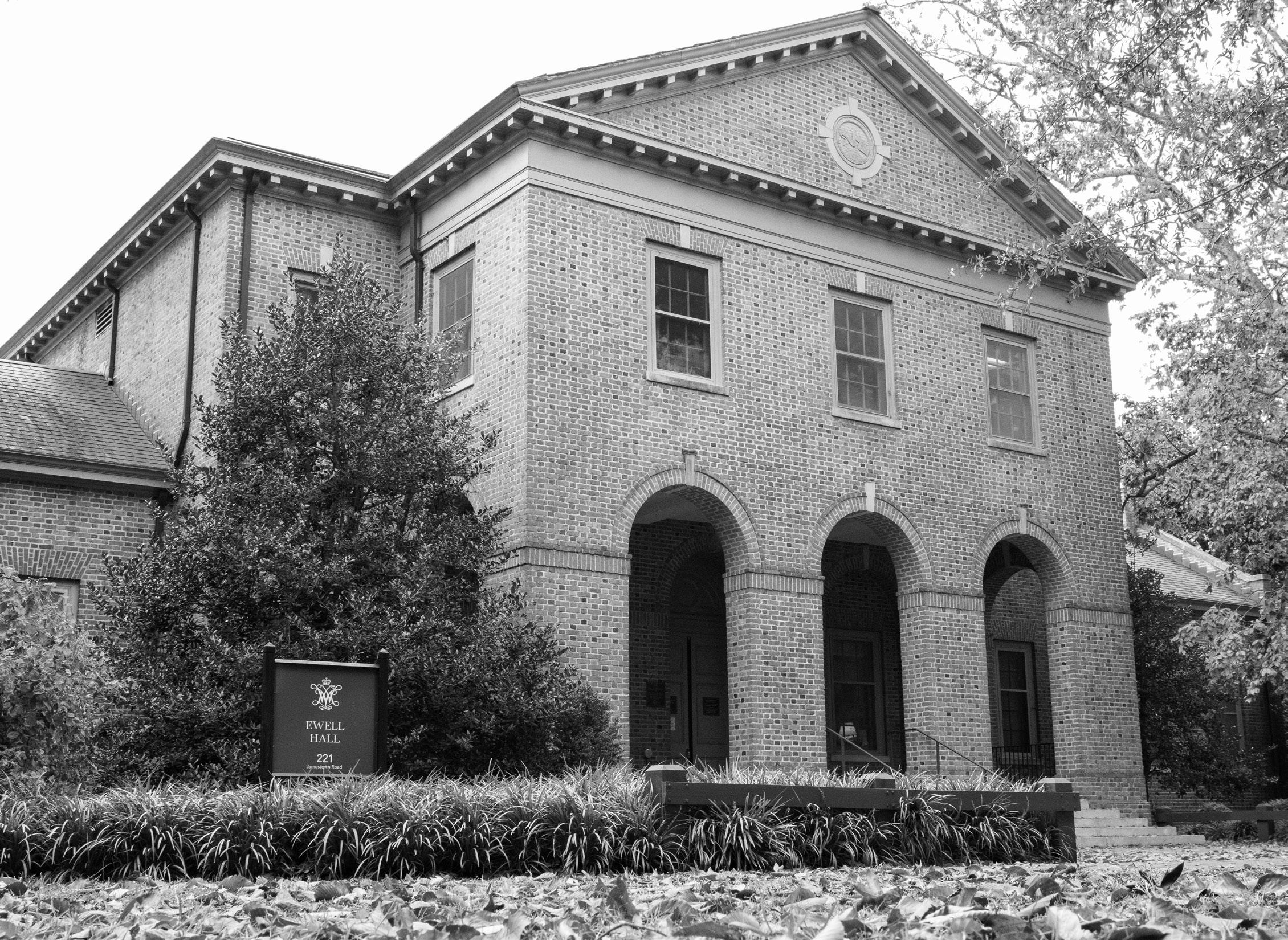
This semester, Flat Hat Magazine held a short story contest open to all students at the College of William and Mary. Participants were asked to write a short story based on the song “Movement” by Hozier. Wil liam Zurborg and Mateus Krauss Dutra wrote stories connecting readers to imaginative spaces. Zurborg’s interpretation will take you to “João’s Eatery and Bar,” where you will hear about the enchanting voice of a mysterious singer. Dutra, on the other hand, was inspired by the willow tree of the chorus. Congratulations to the winners, and thank you to everyone who submitted!

The bough of the willow tree shook with a gust of wind. Two boys sat underneath its cascading leaves. The sun was setting but taking its time, and the August heat of the day had mellowed into something resembling coolness.
One of the boys, blonde, lithe, and strong, was still a bit sticky with sweat from running around all day. The other had thin black hair and was wearing a button-down, long sleeve t-shirt. He’d spent all day inside and hadn’t sweat a drop.
The former was enjoying their stillness; he’d had his fill of running. The latter could only feel the absence of the energy that should’ve been his by the right of youth.

They looked like negatives of each other; despite being close friends, there was a universe of distance in the six or so inches that separated them on that summer night. This could be the last time they saw each other, and so they — who were usually so easy and open — found themselves completely silent.
So they just moved. Slowly drawing closer together. And as the sun moved down to the horizon that night, like it does every night, they too moved closer together.
Mateus Krauss Dutra ‘23 João’s Eatery and Bar (est. 1953)To find João’s, you have to descend a flight of stairs below street level and walk down a single-file hallway to a red door. Behind that door is where I heard her for the first time. Her jet-black hair reflected streaks of gold from the candles lighting the room. I took a seat at the bar as she strummed her guitar and sang her melancholy tunes. All eyes were locked on her, but her eyes were fixed on something far from here.
“She’s singing Fado — Portuguese songs of longing and loss,” the bartender said in a hushed tone.
I was entranced, unable to move. Her words, though foreign, began to make perfect sense to me, as if trans lated by the strings of her guitar. Sailors departing for unknown lands, perhaps never to return — lives forgot ten in all but song.
I stayed all night. When she finished, I put a five in the jar and left through the red door. Behind that door is where I heard her for the last time. The city reemerged atop the stairs, cold and indifferent to the happenings at João’s.
J. Zurborg J.D. ‘22This semester, Flat Hat Magazine must say goodbye to a beloved member of the staff, our Multimedia Editor Justin Sherlock ’22. Justin dedicated half of his college career to the beautification of The Flat Hat Newspaper and Magazine through his photographs. His work ensured that The Flat Hat remained relevant, thought-provoking, and visually engaging. Always the visionary, Justin’s work is permanently enshrined on two Magazine covers, making him responsible for 1/3 of all published covers. His kindness, empathy, creativity, and humor will be missed. All those on staff are guaranteed to have a big Justin-sized hole in their hearts. To acknowledge all the hard work of our resident photographer, Flat Hat Magazine has painstakingly curated a series of highly-professional photos featuring our cherished Multimedia Editor. Without further ado, Flat Hat Magazine is honored to present Justin Sherlock in 0.5x. . .









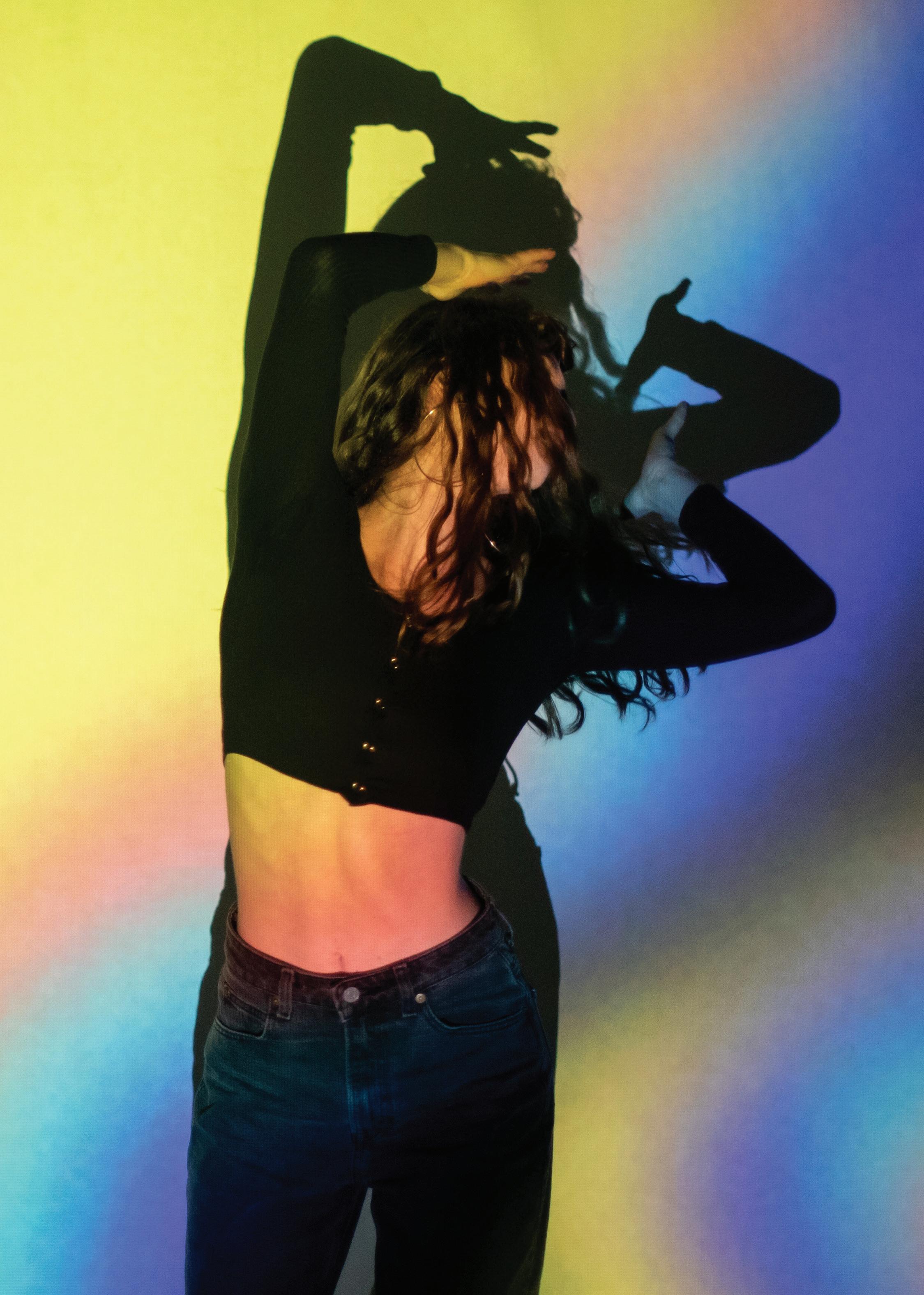 © Flat Hat Magazine 2022. All Rights Reserved.
© Flat Hat Magazine 2022. All Rights Reserved.